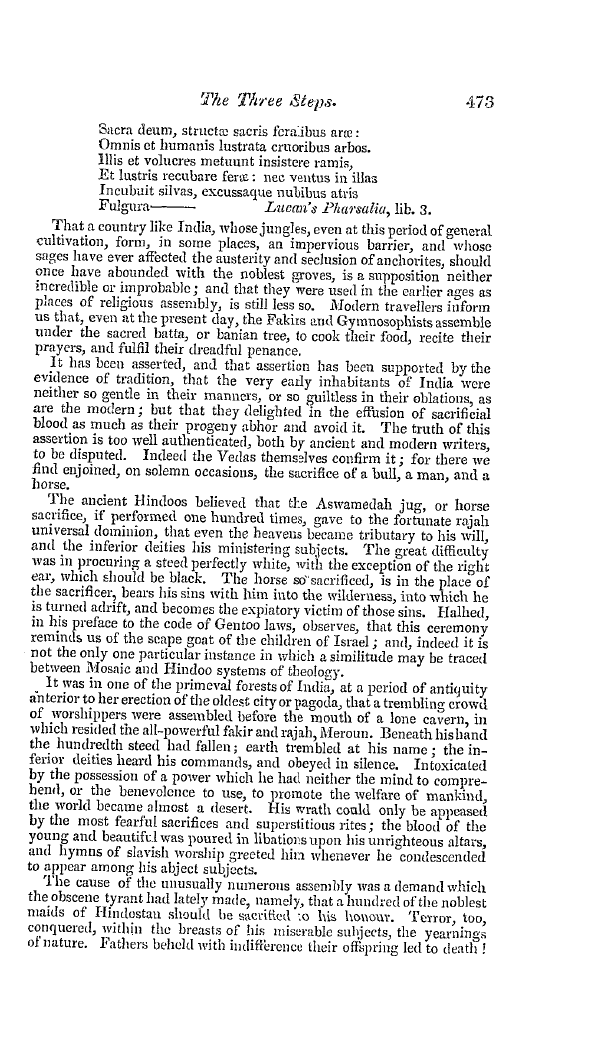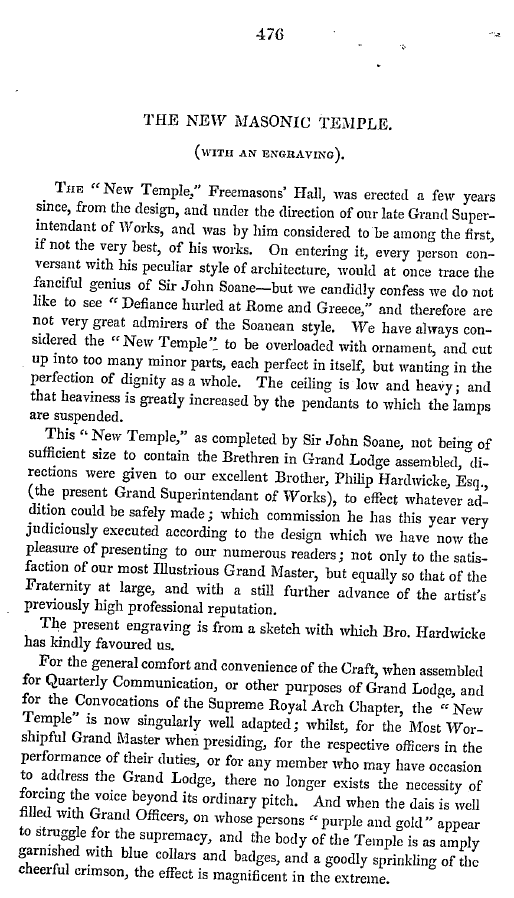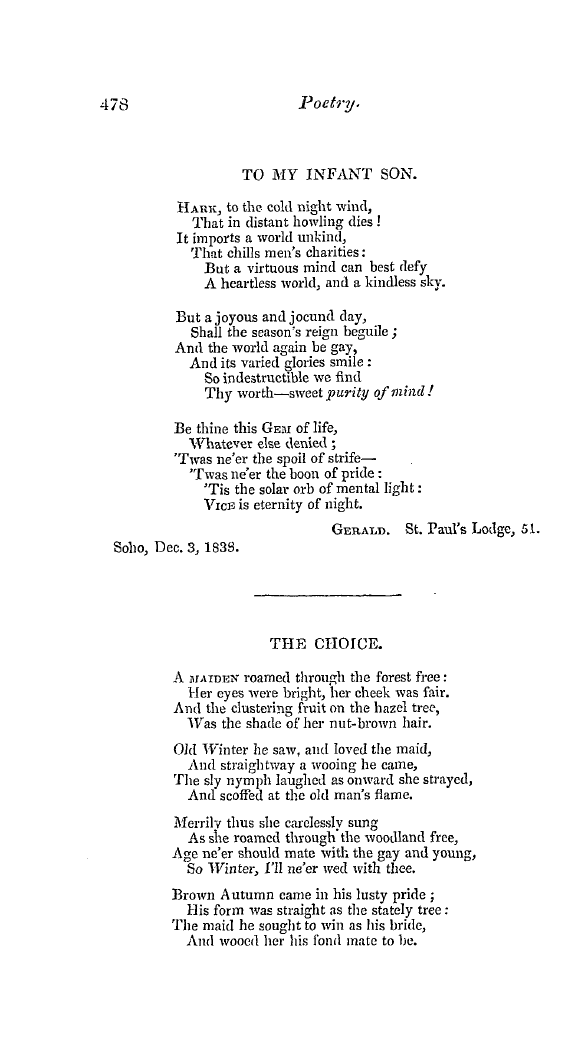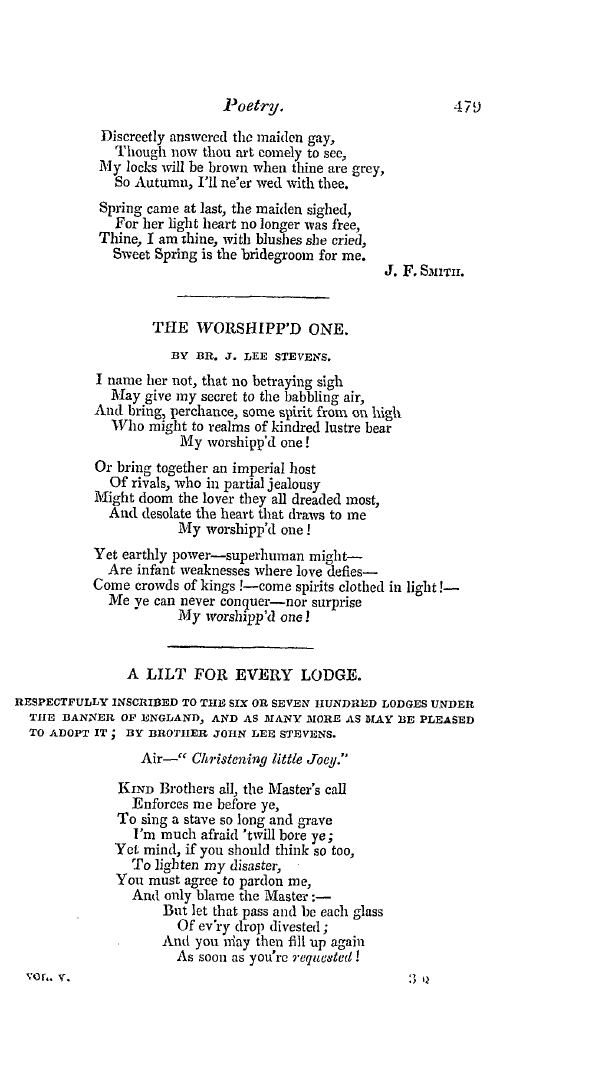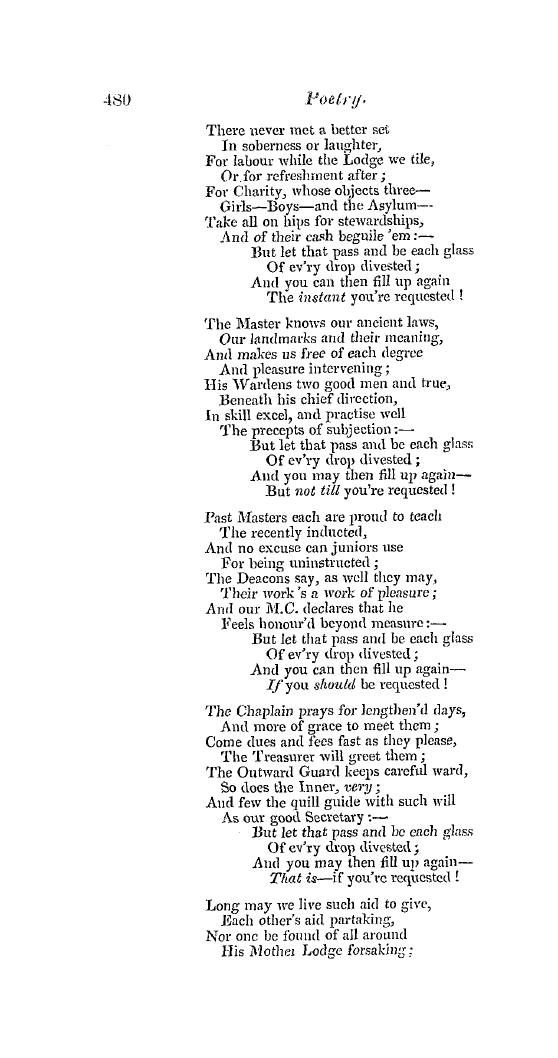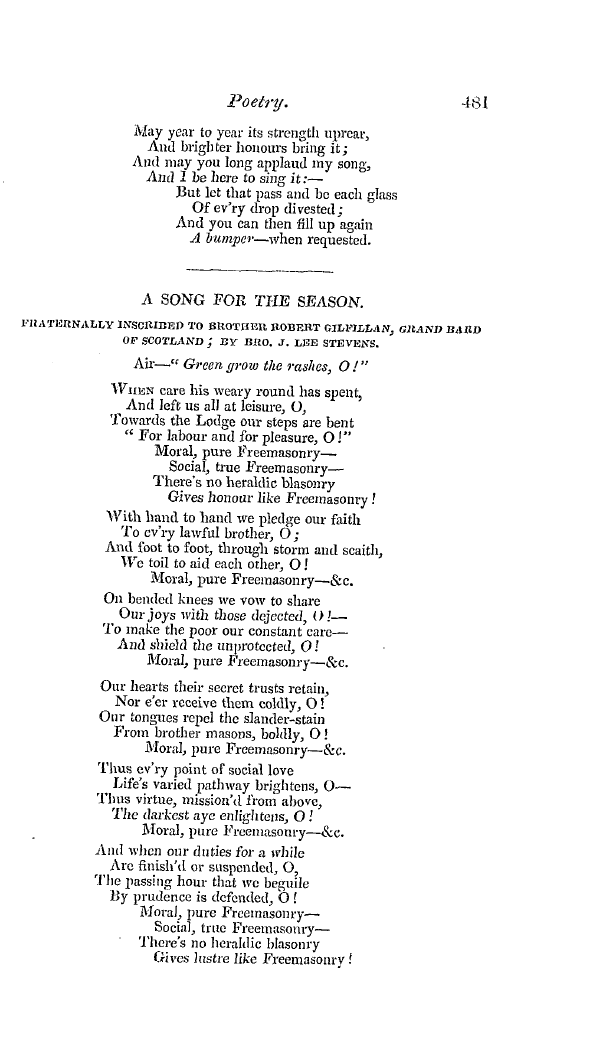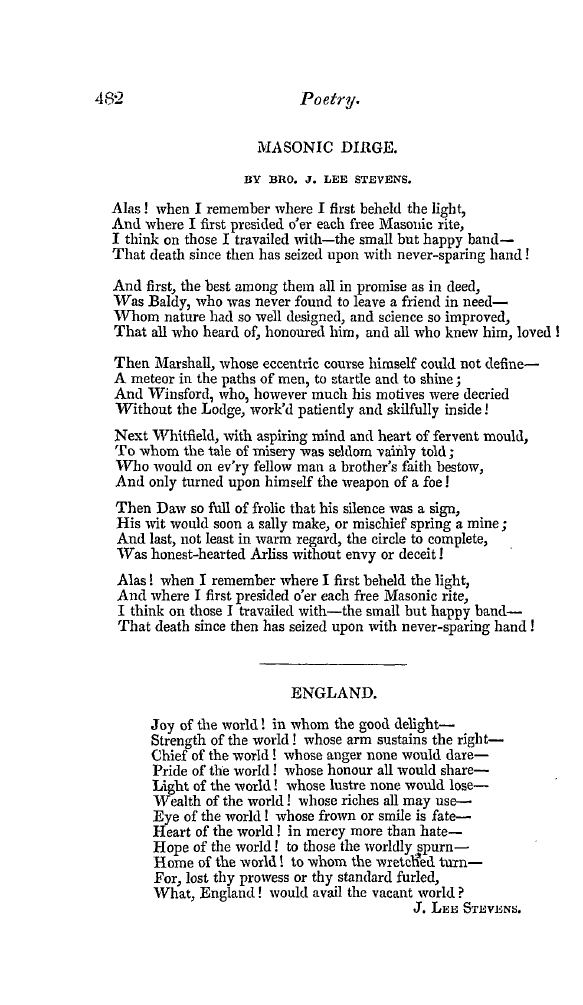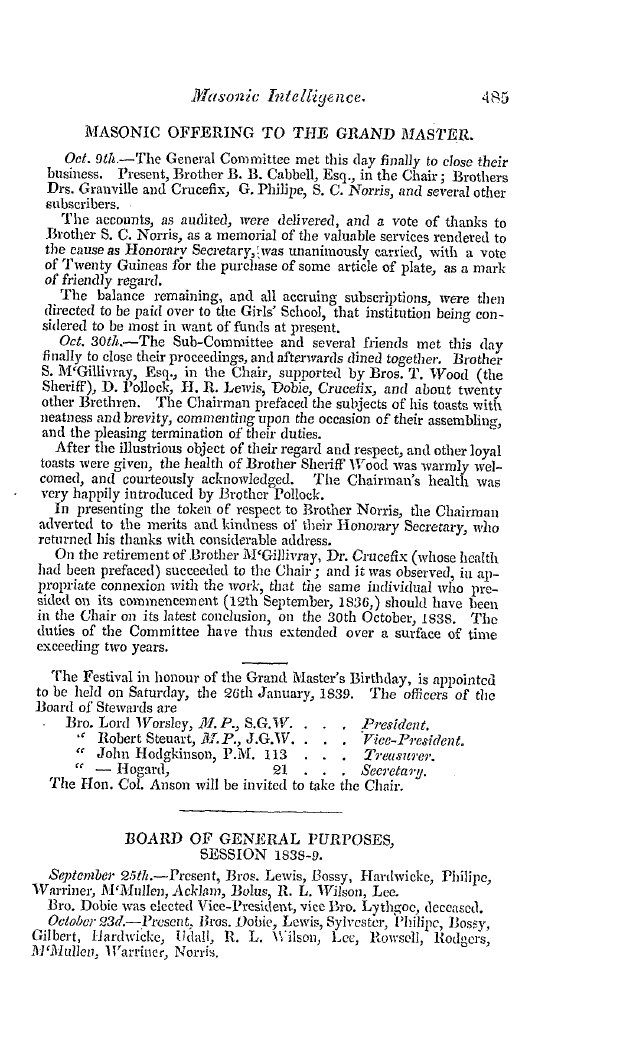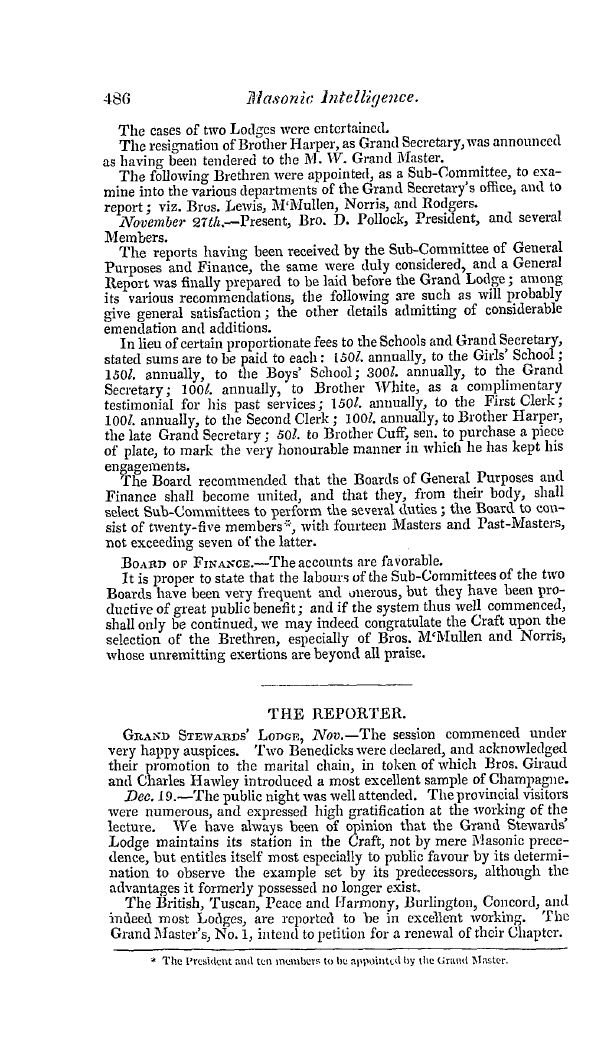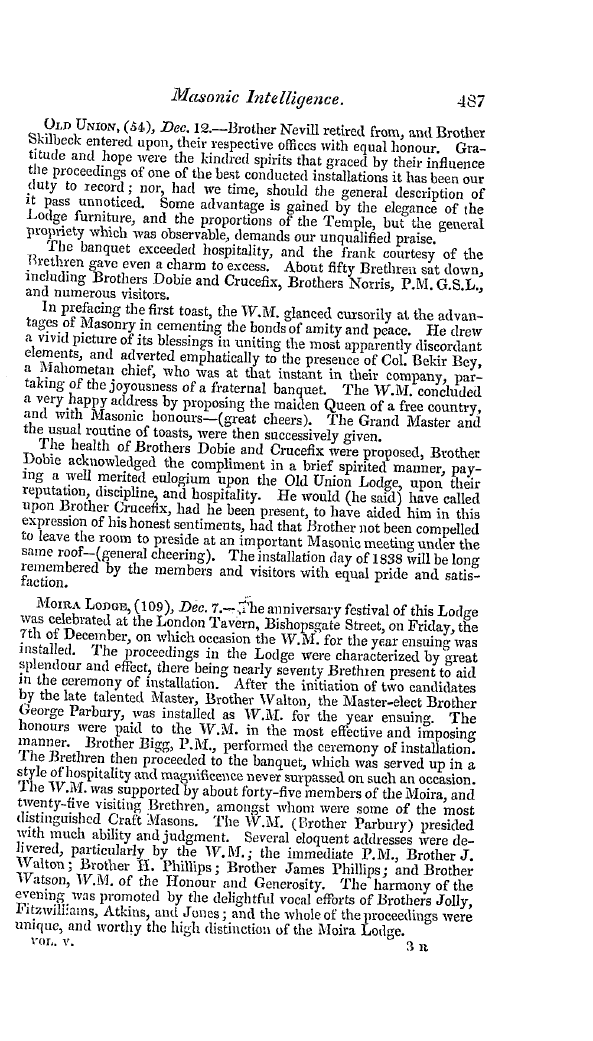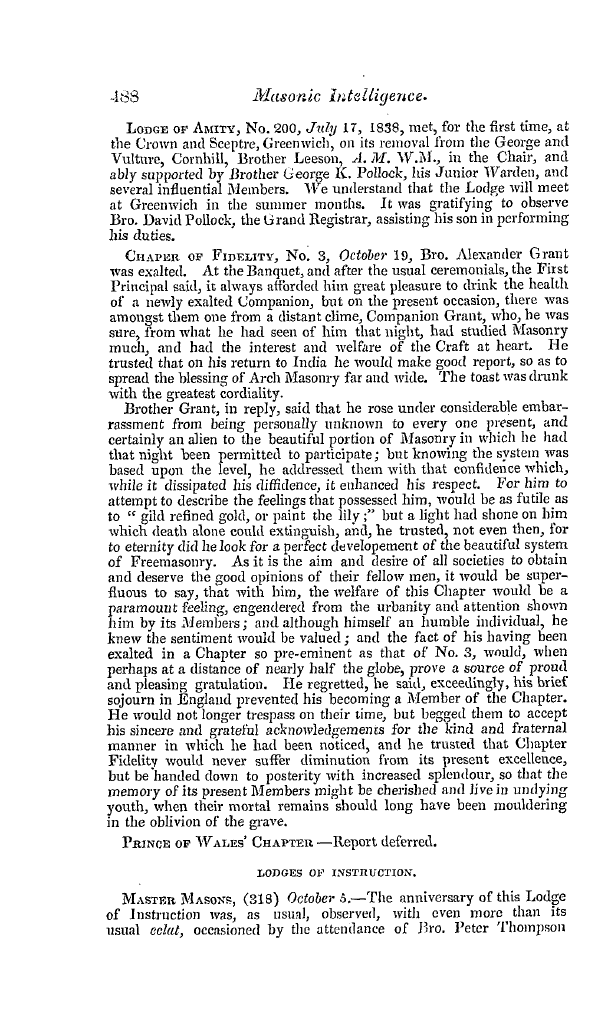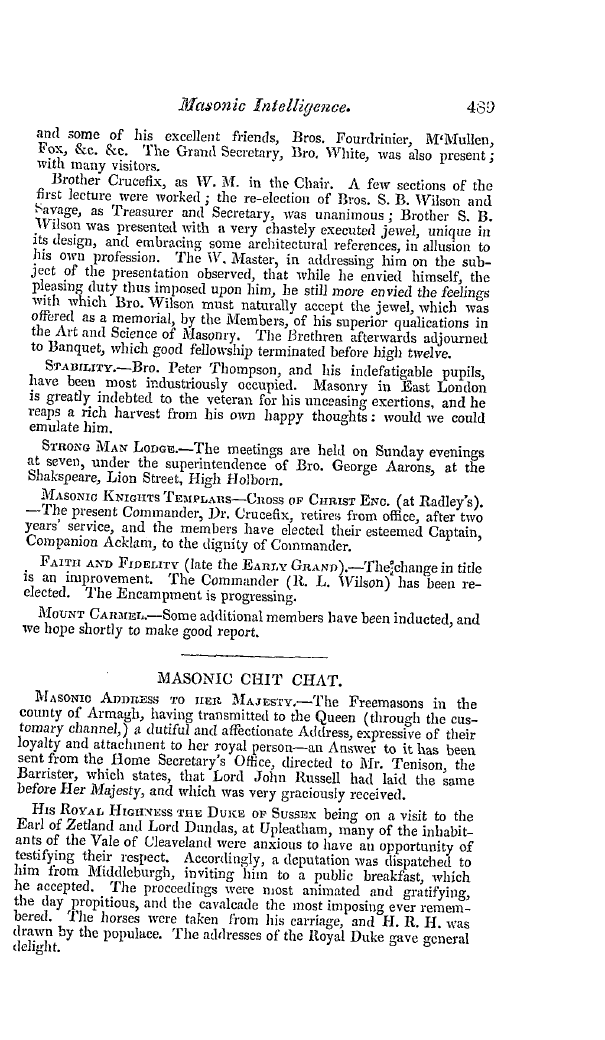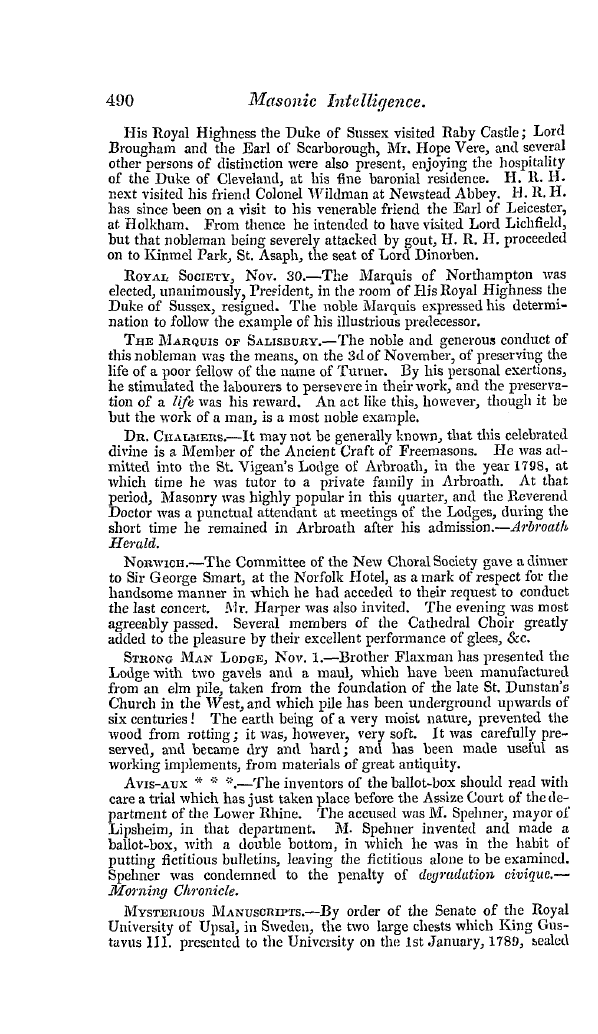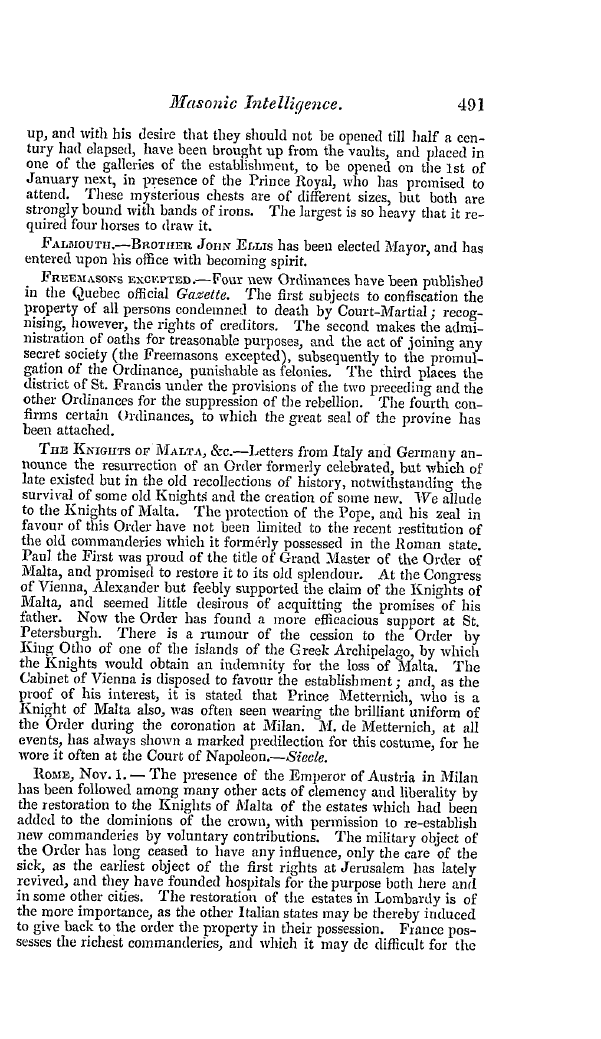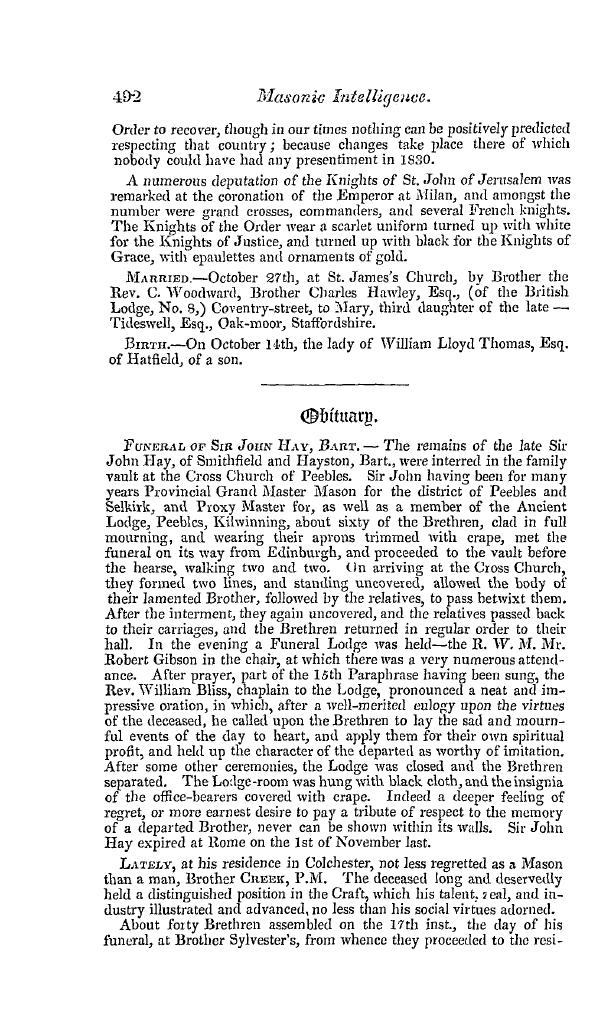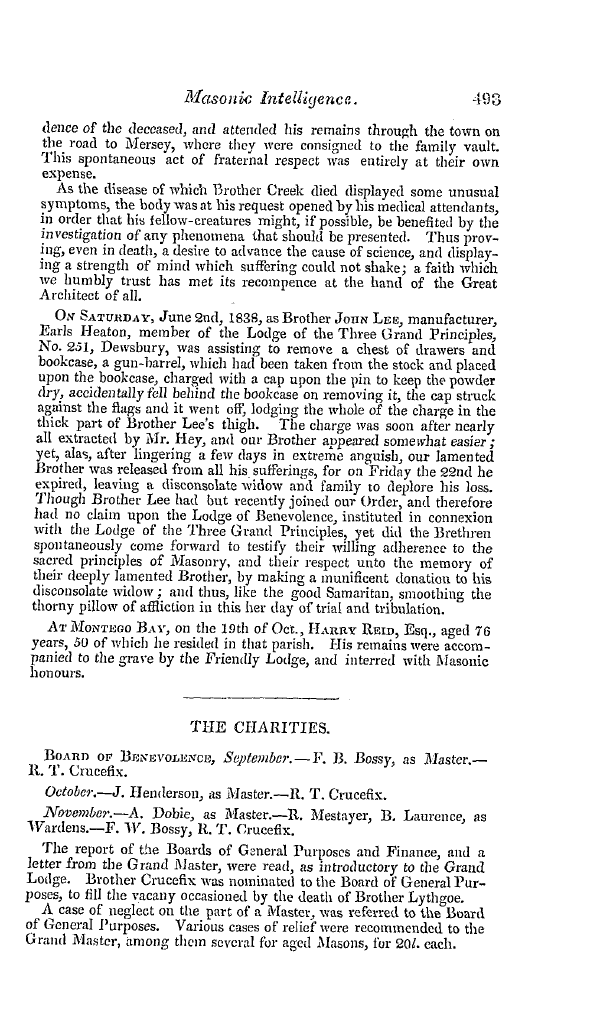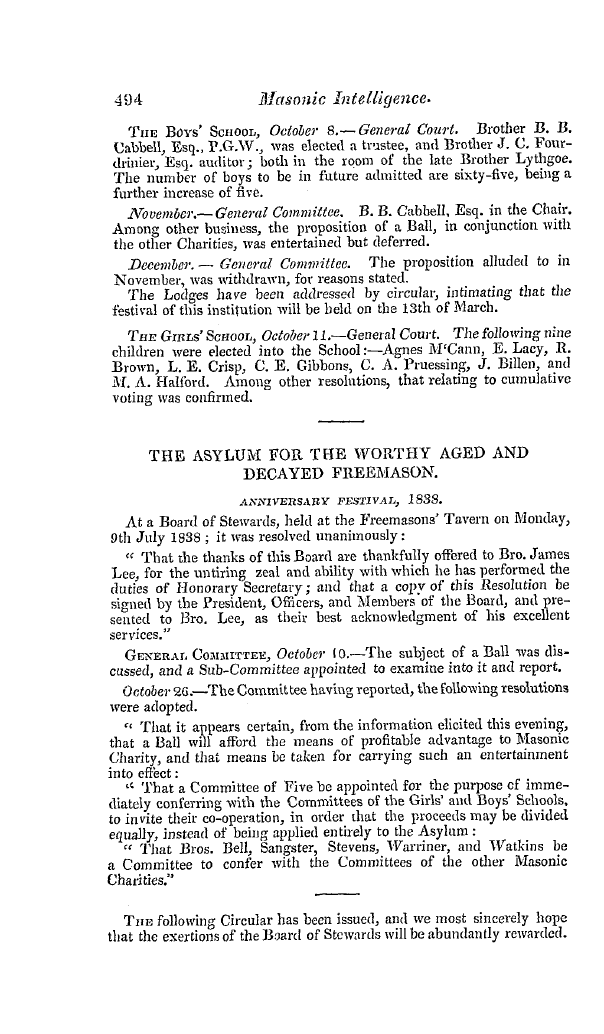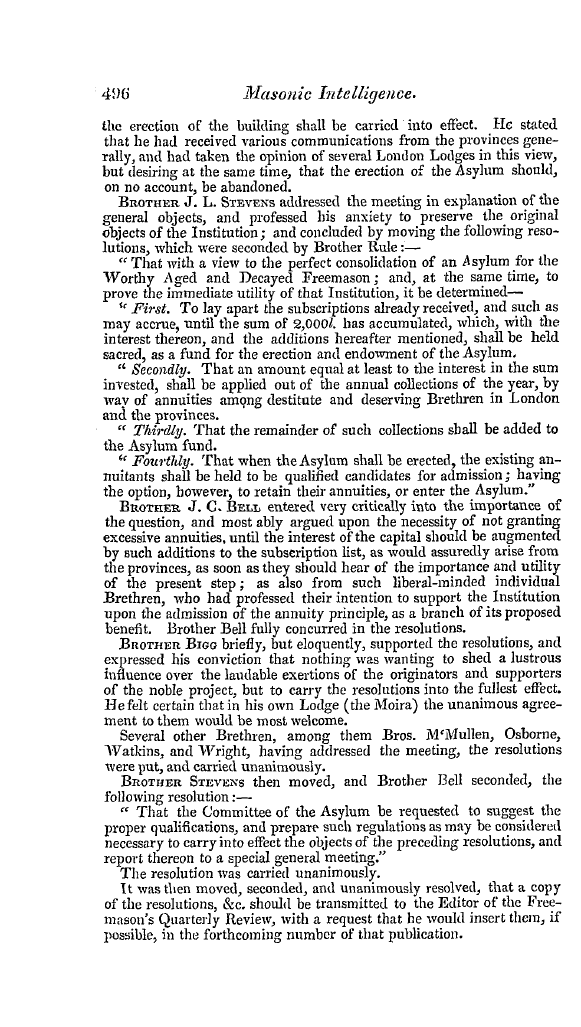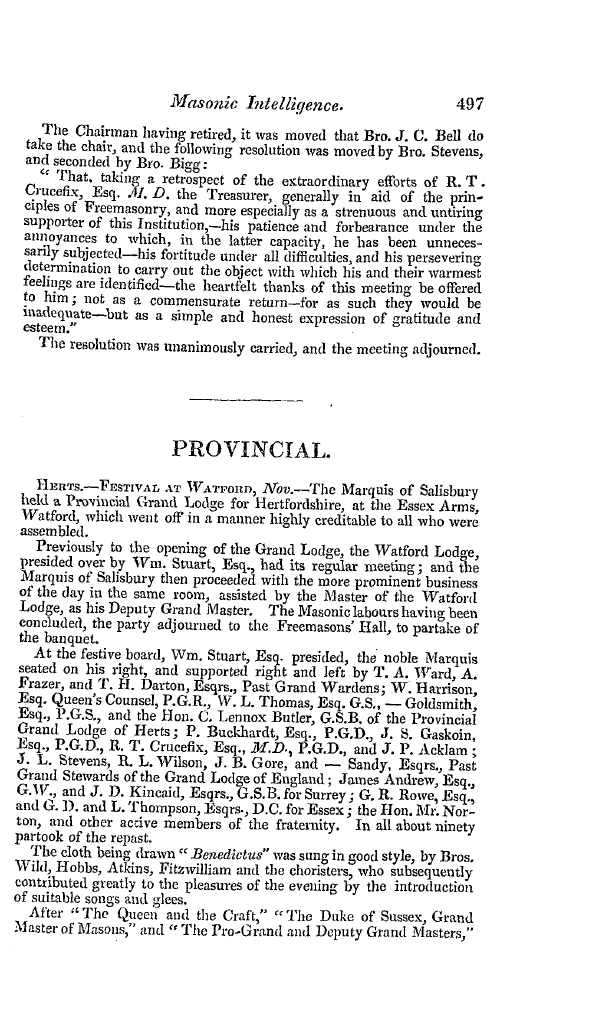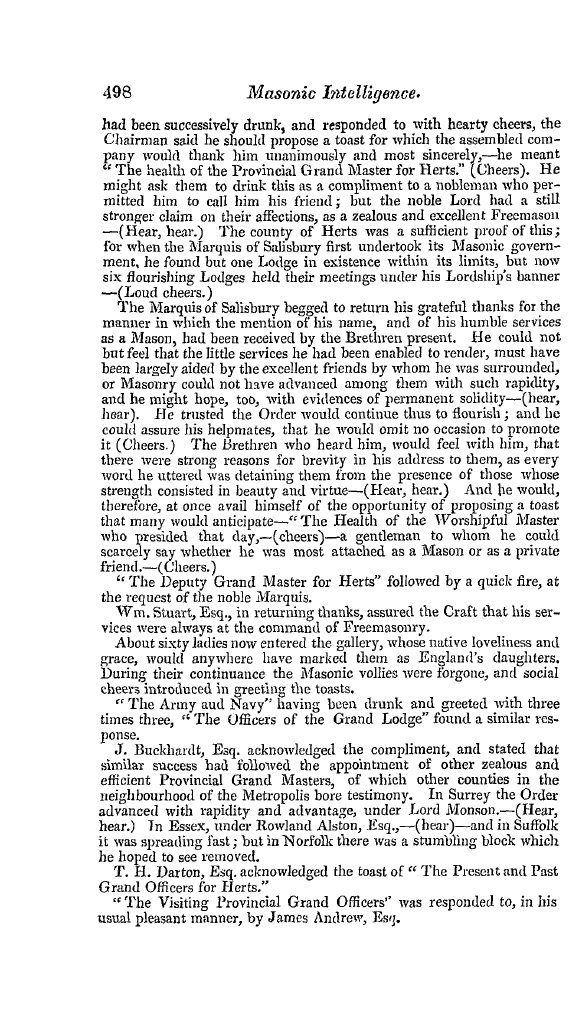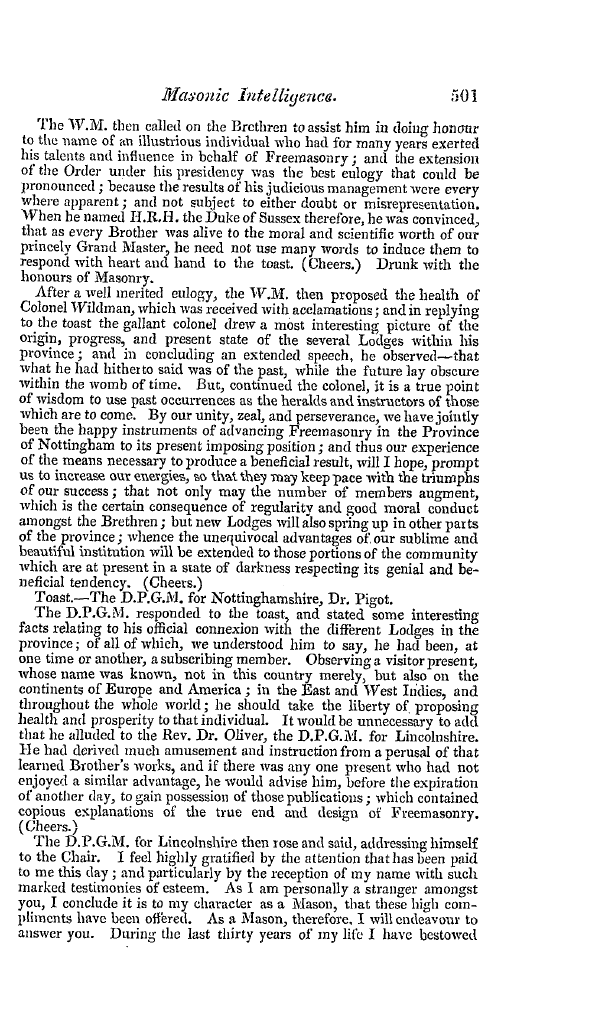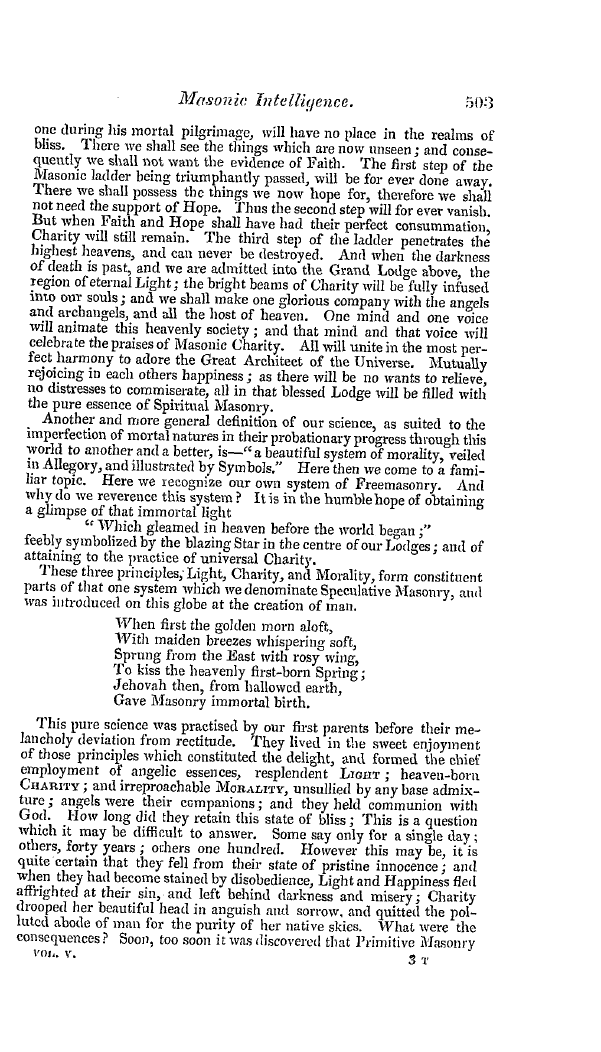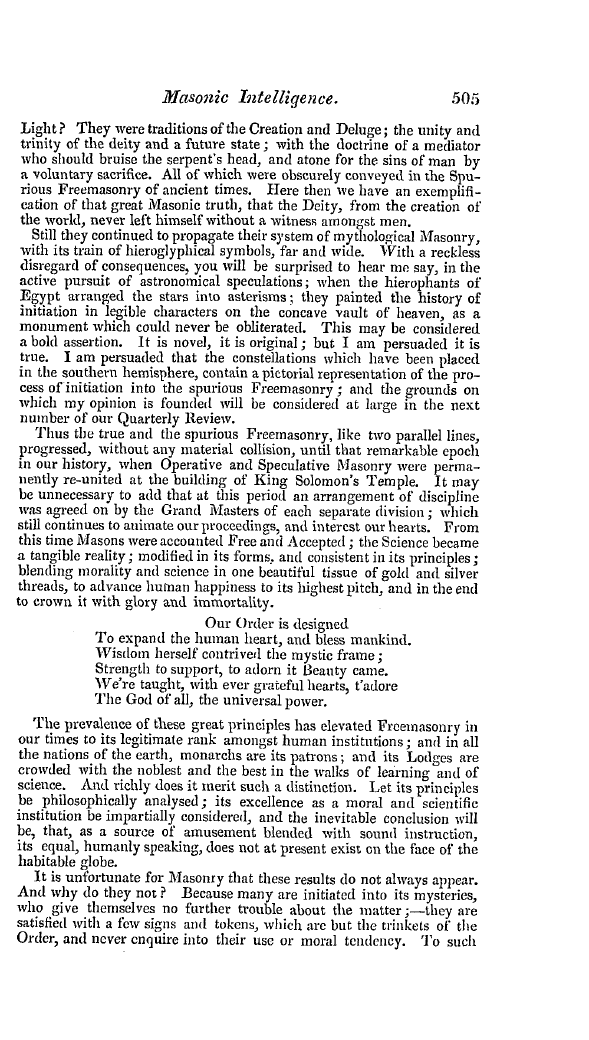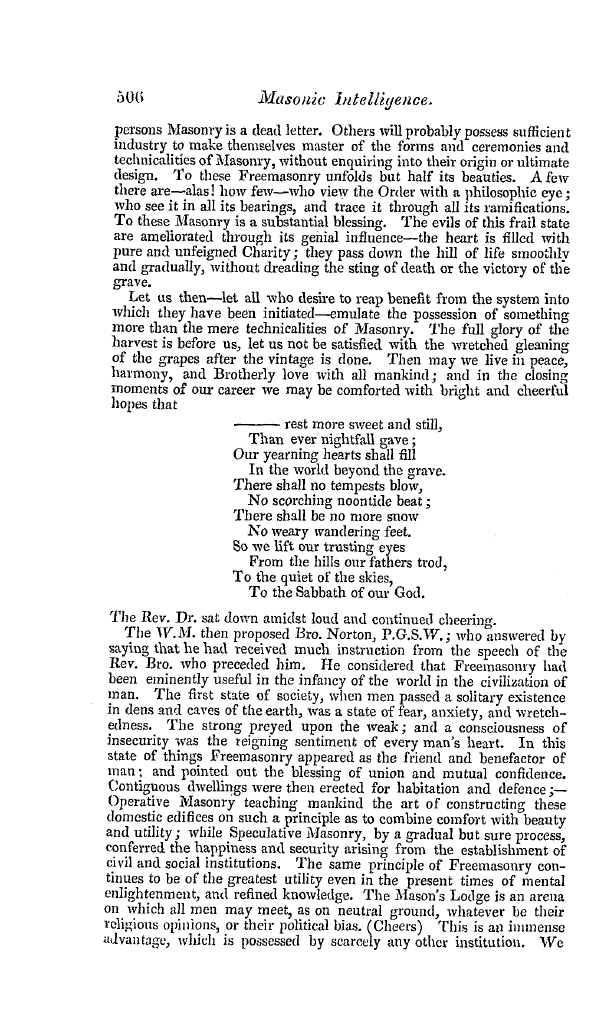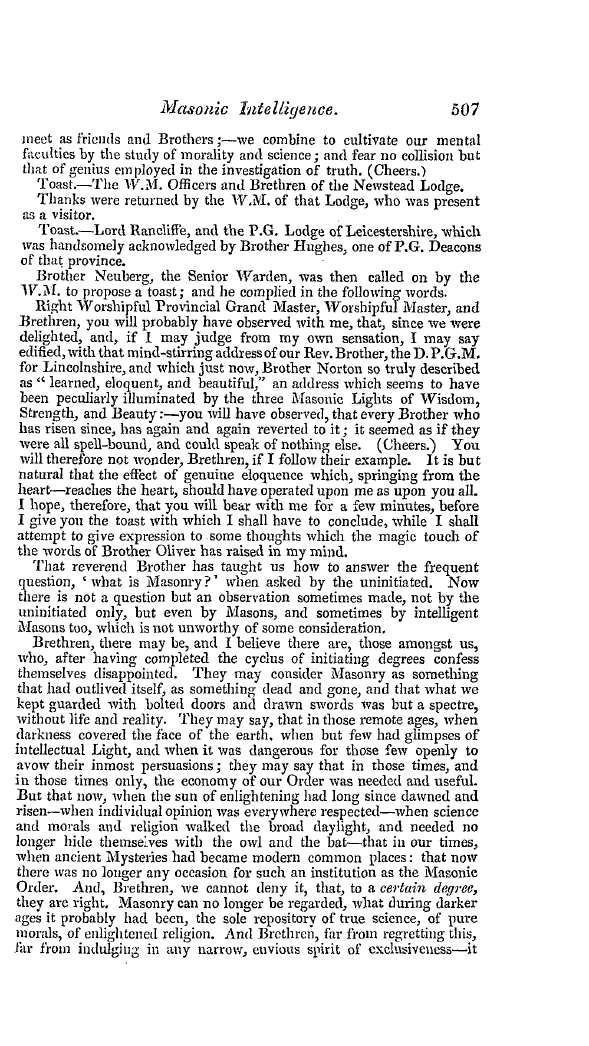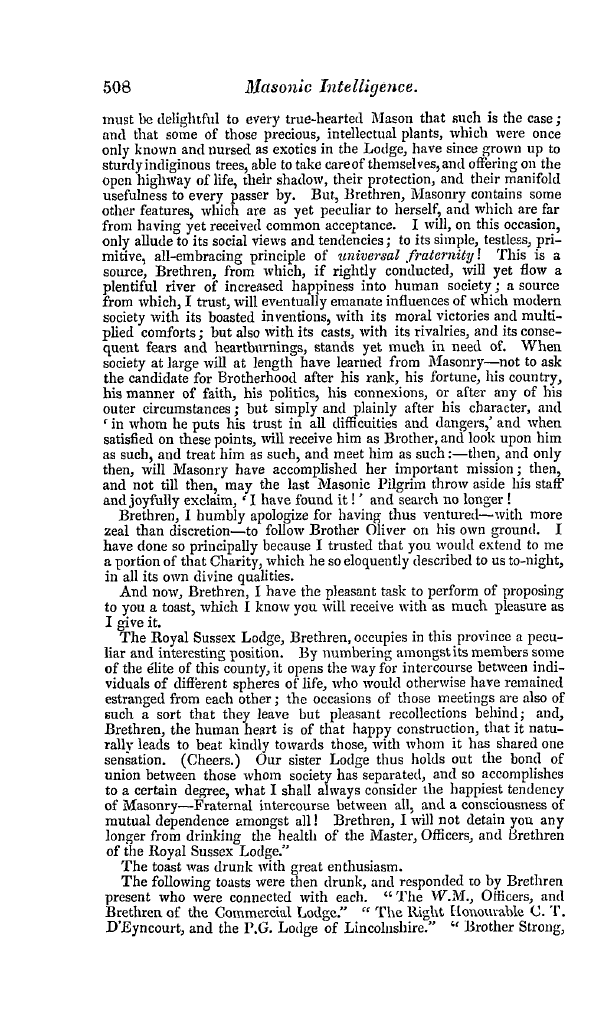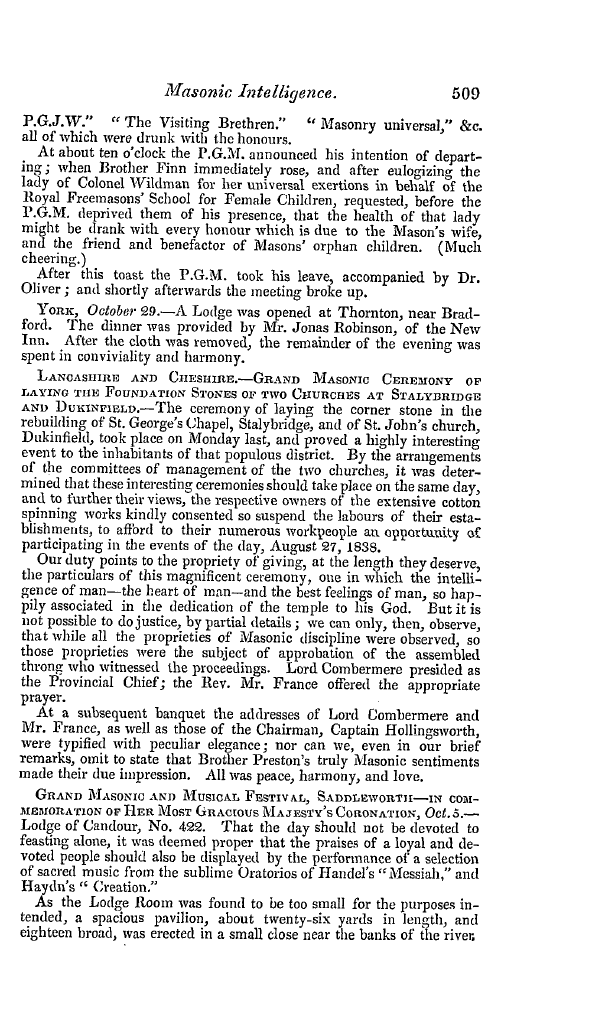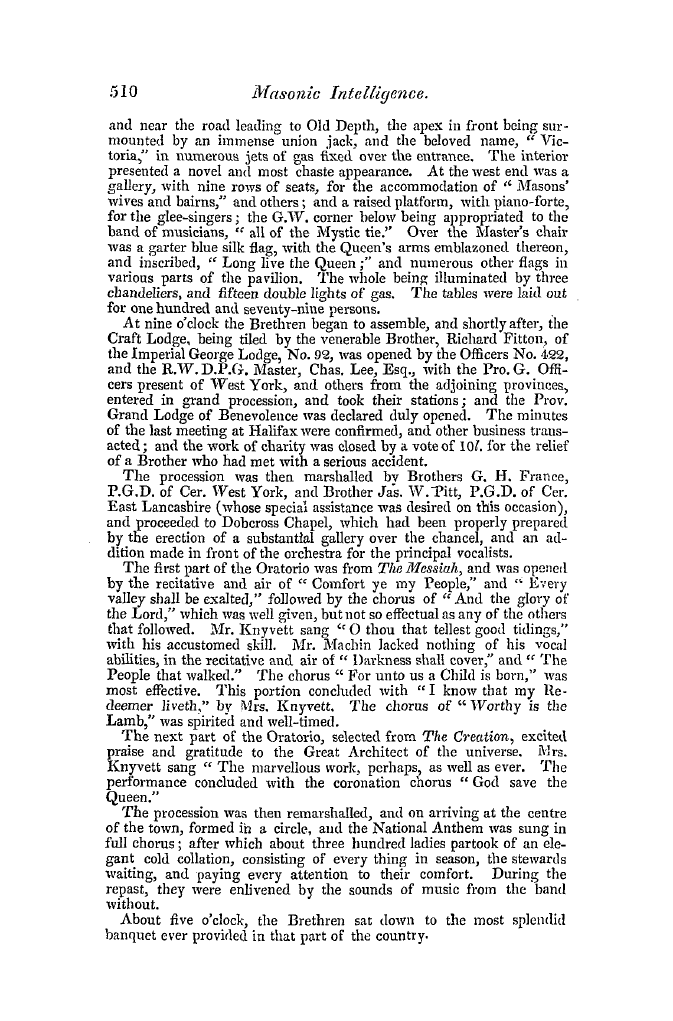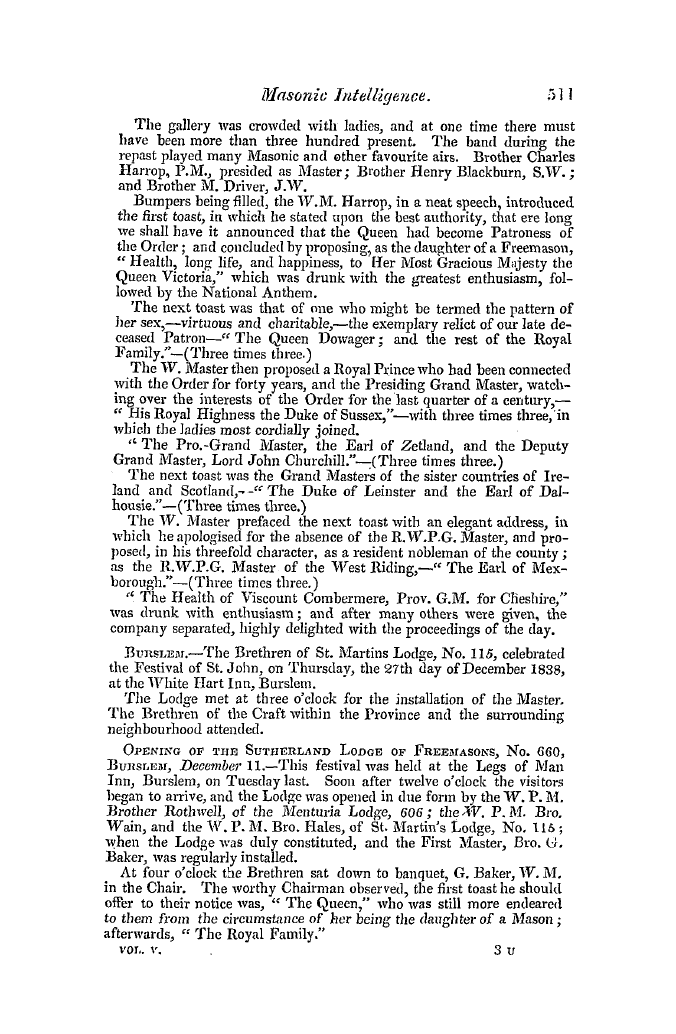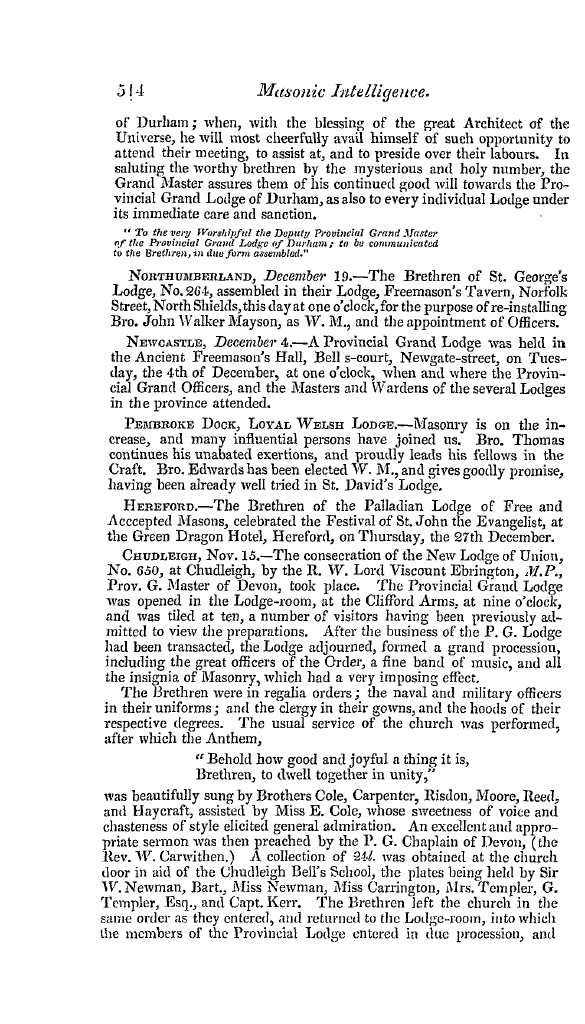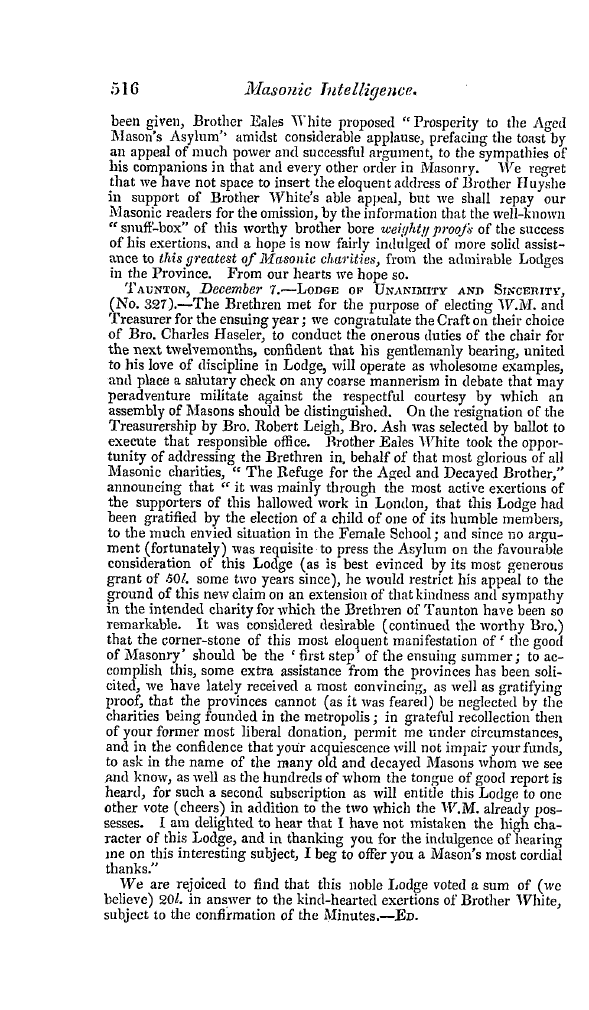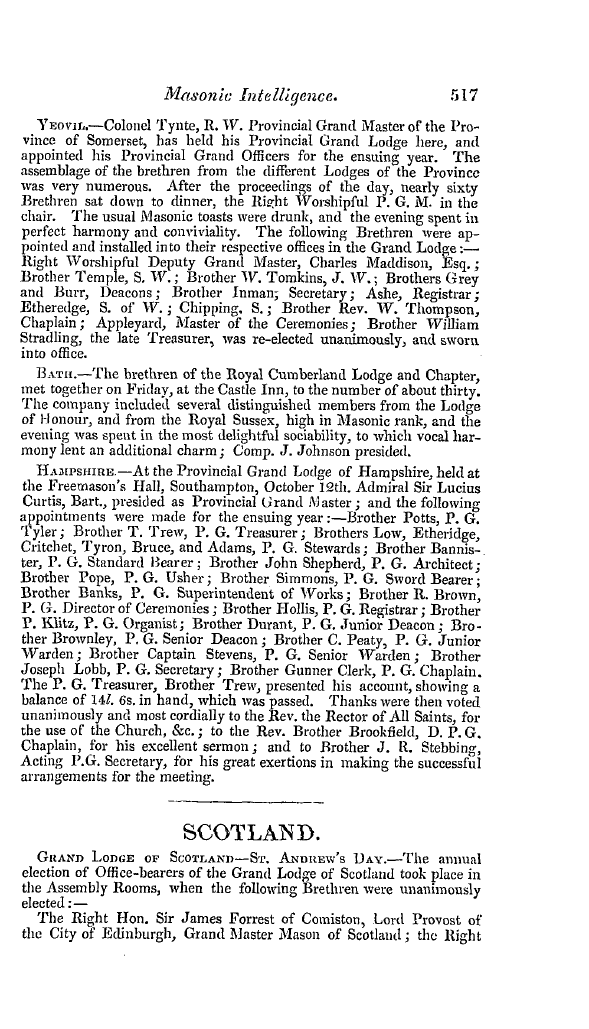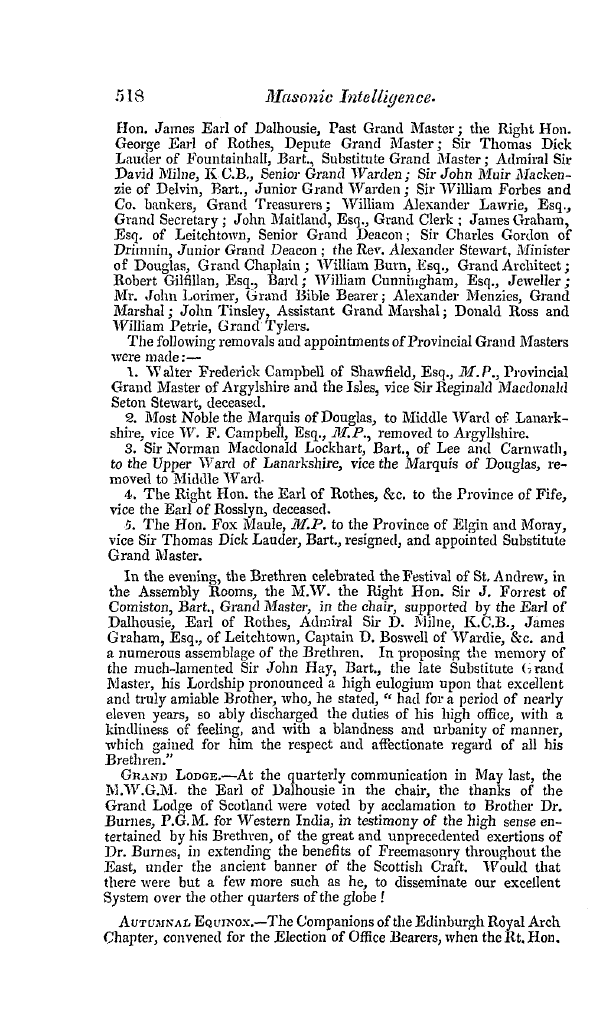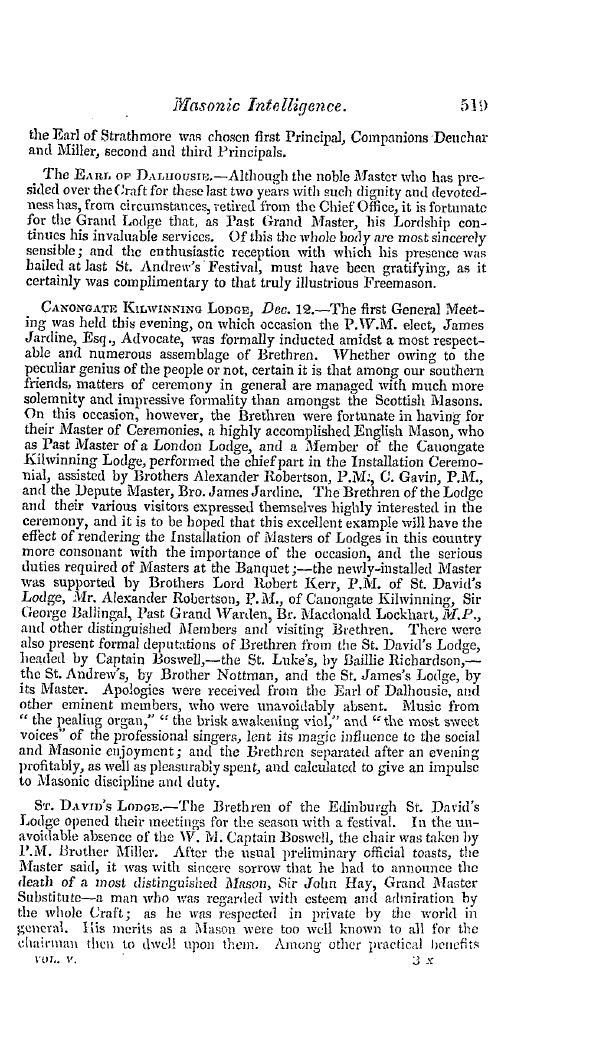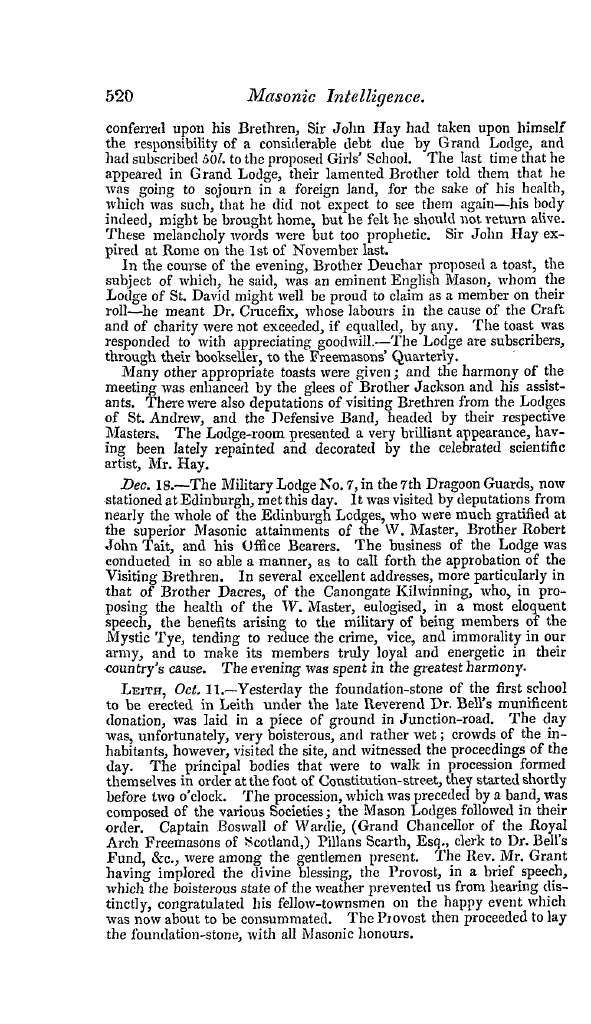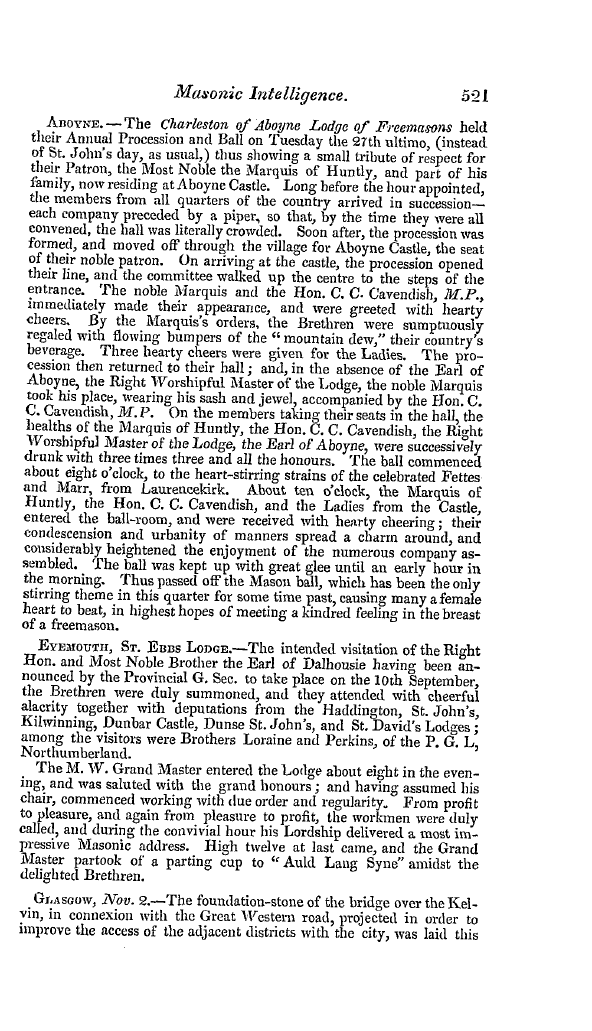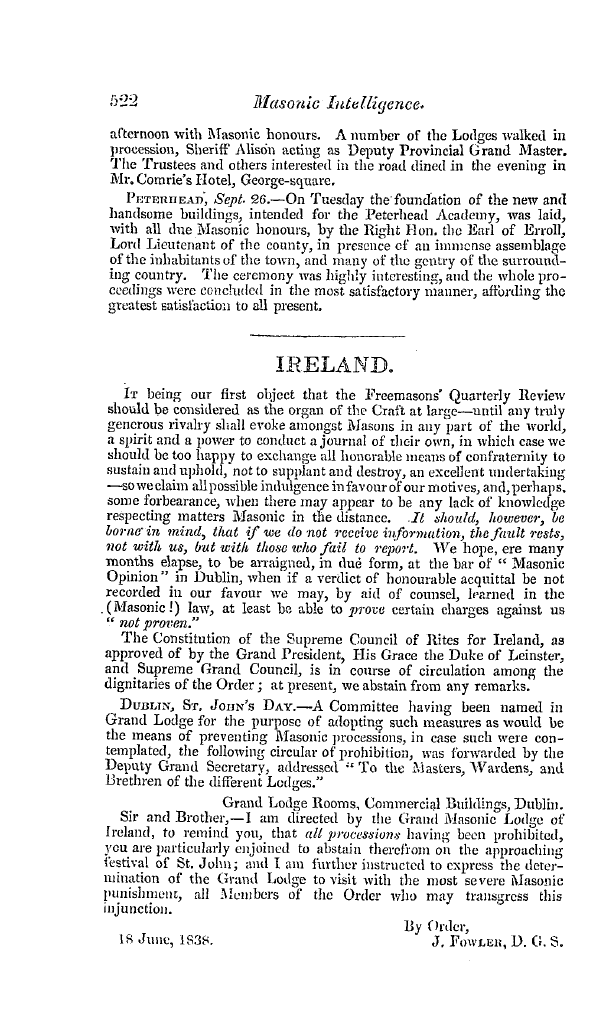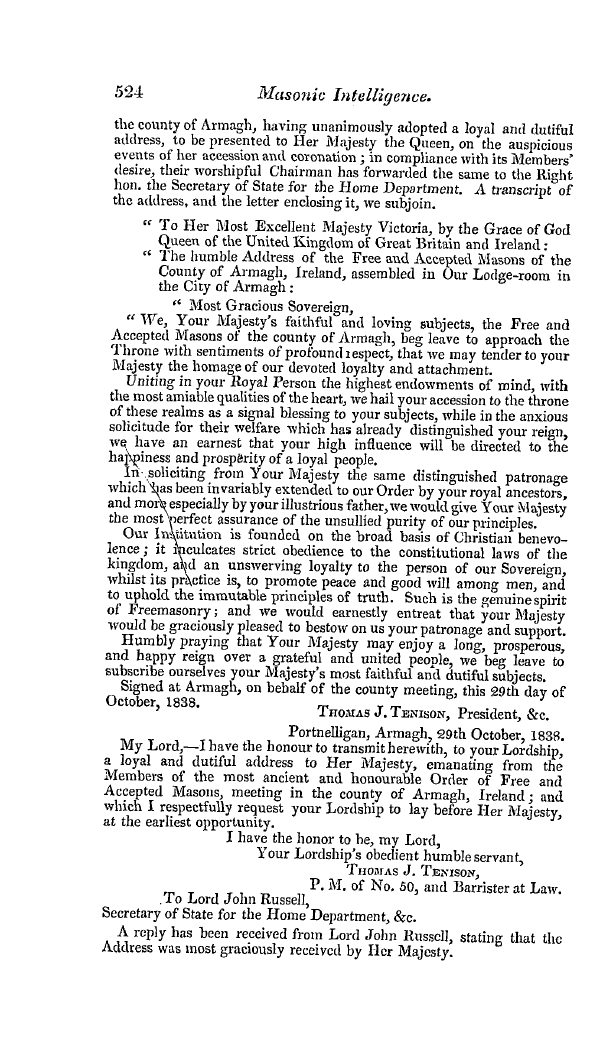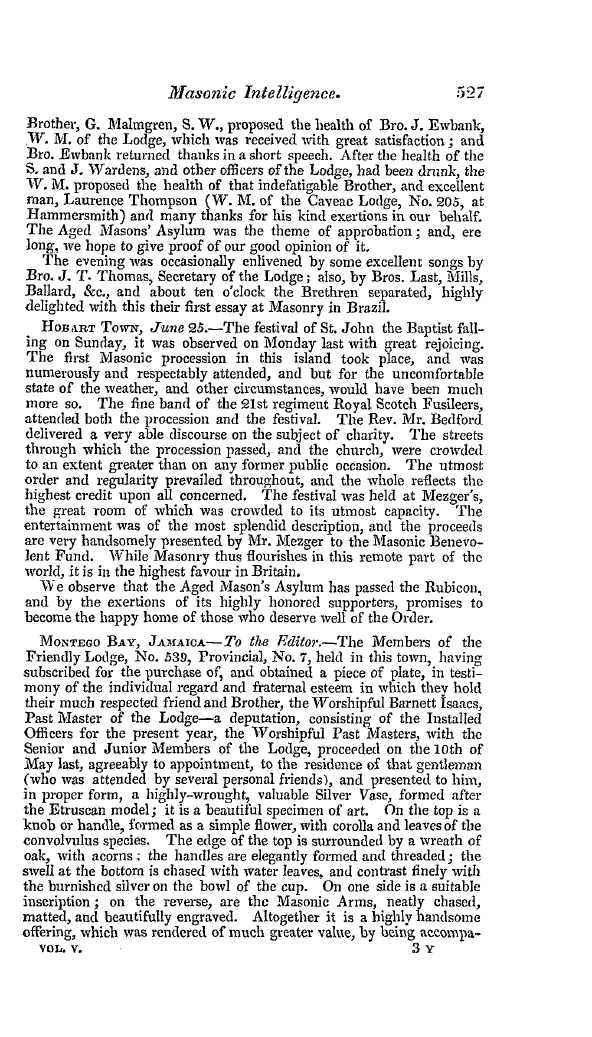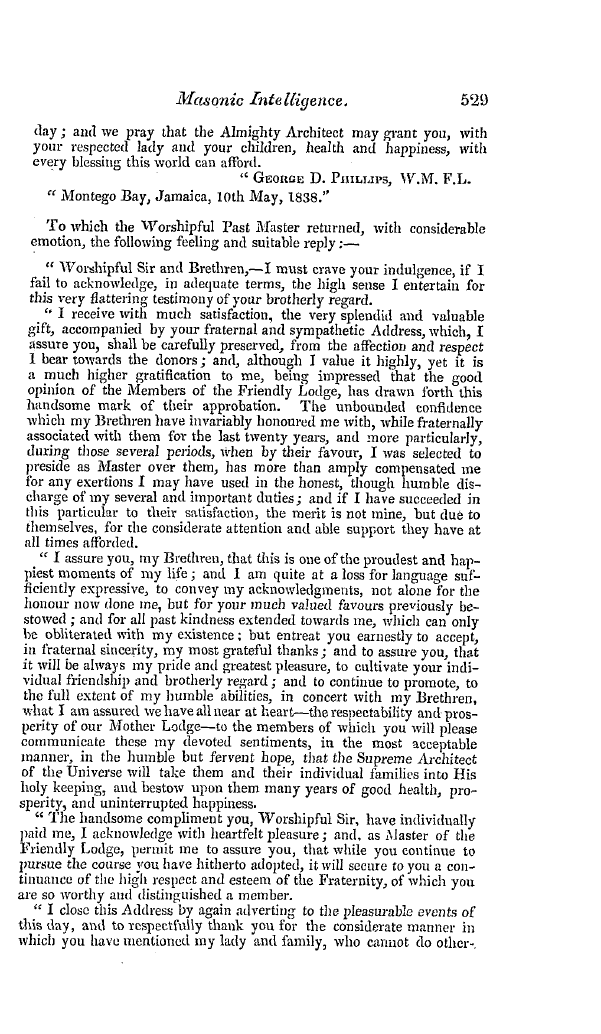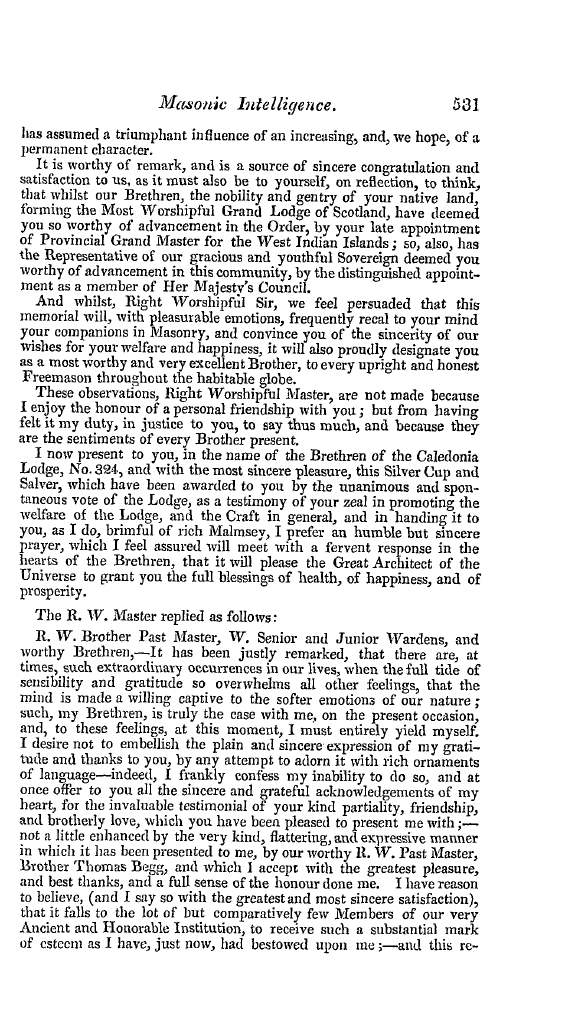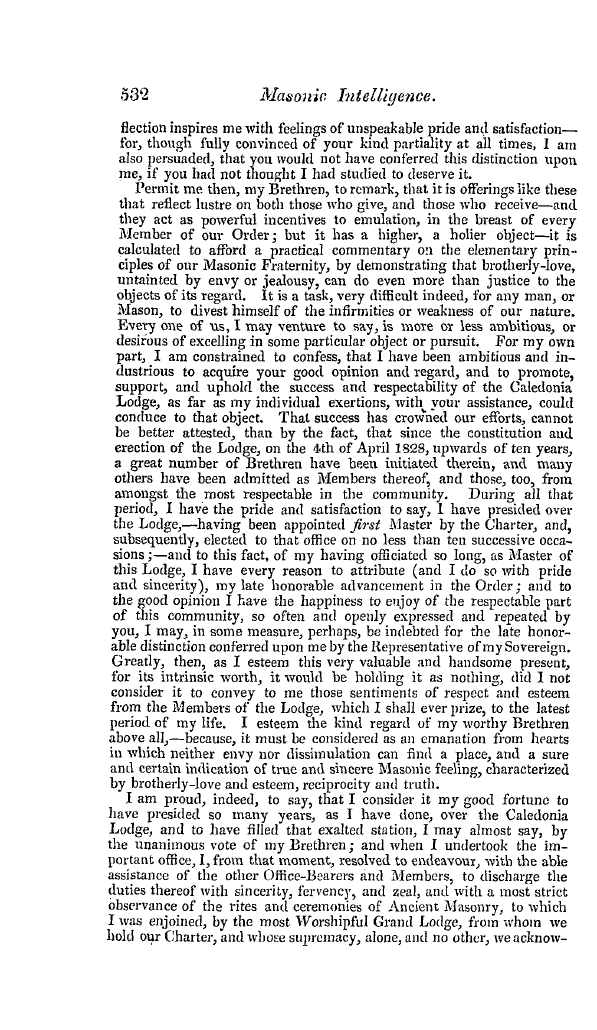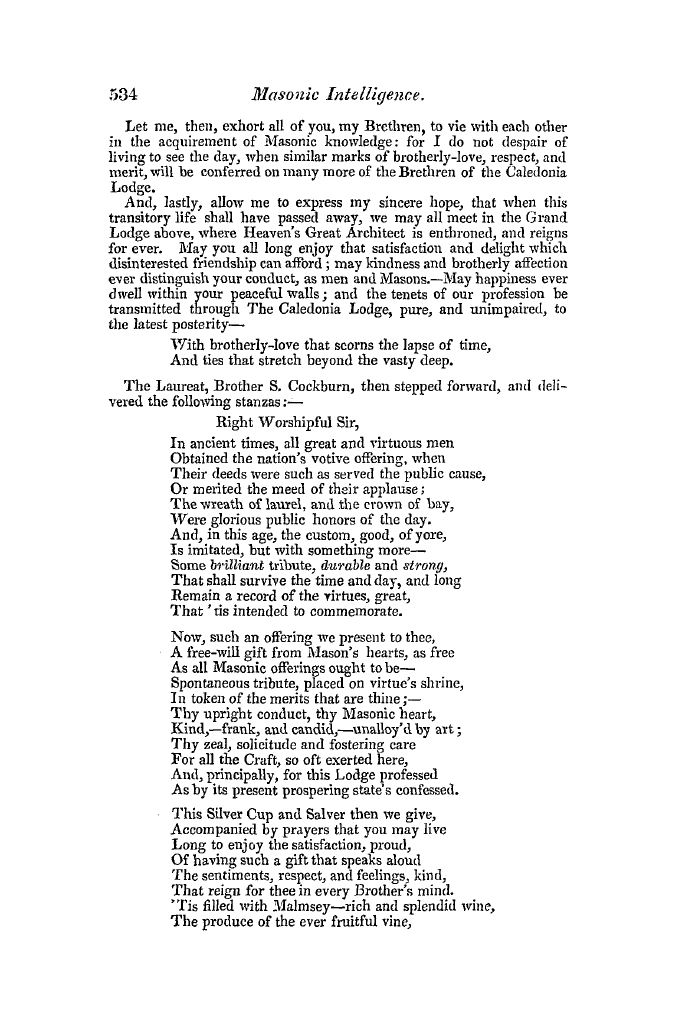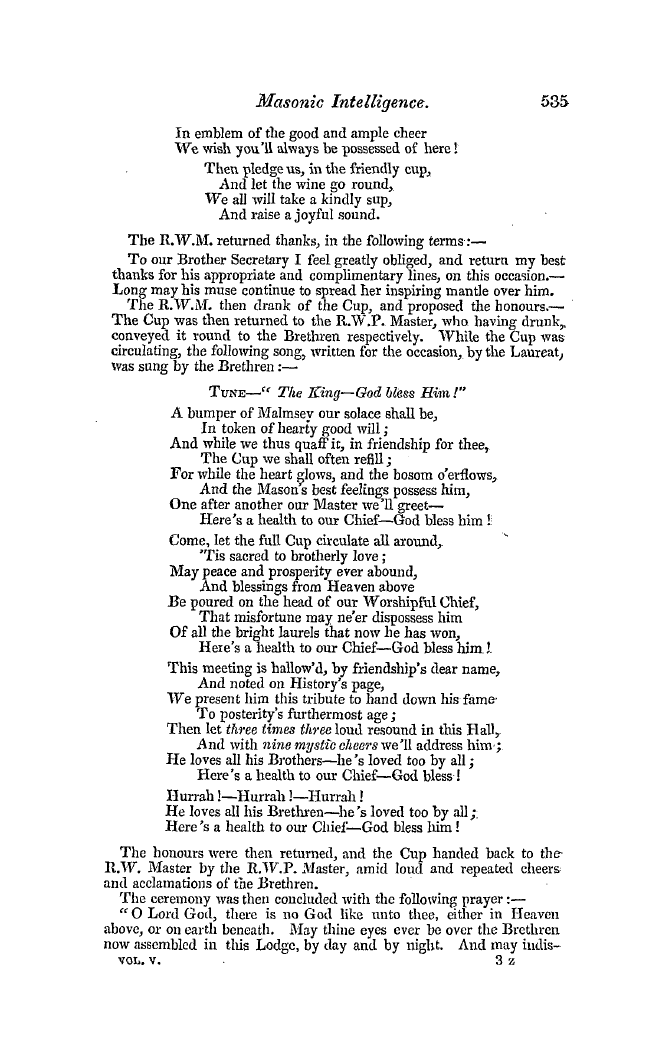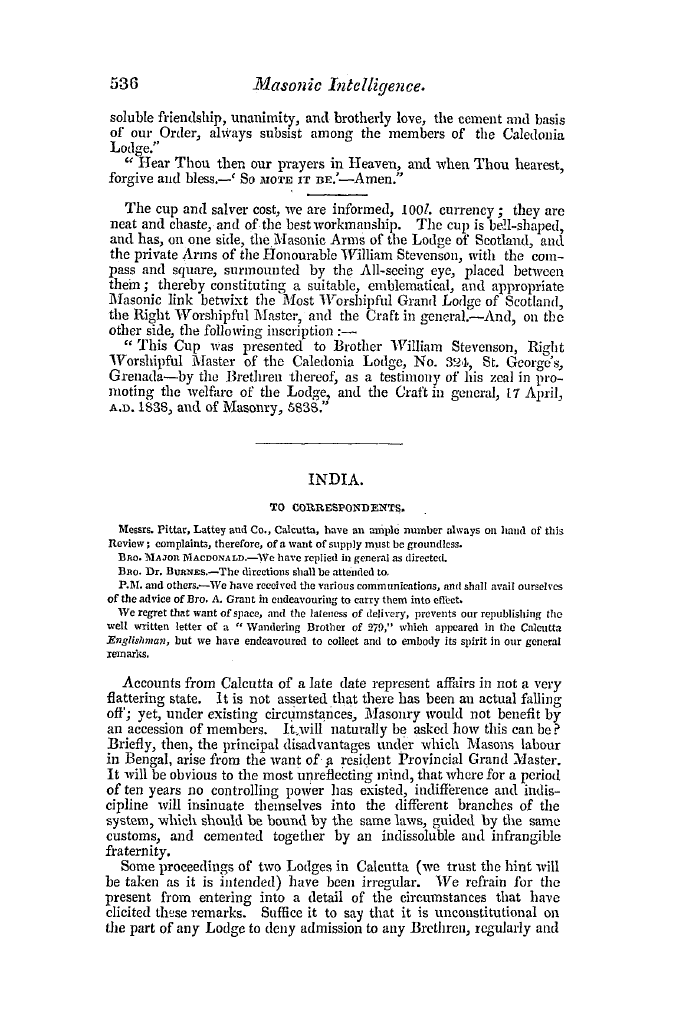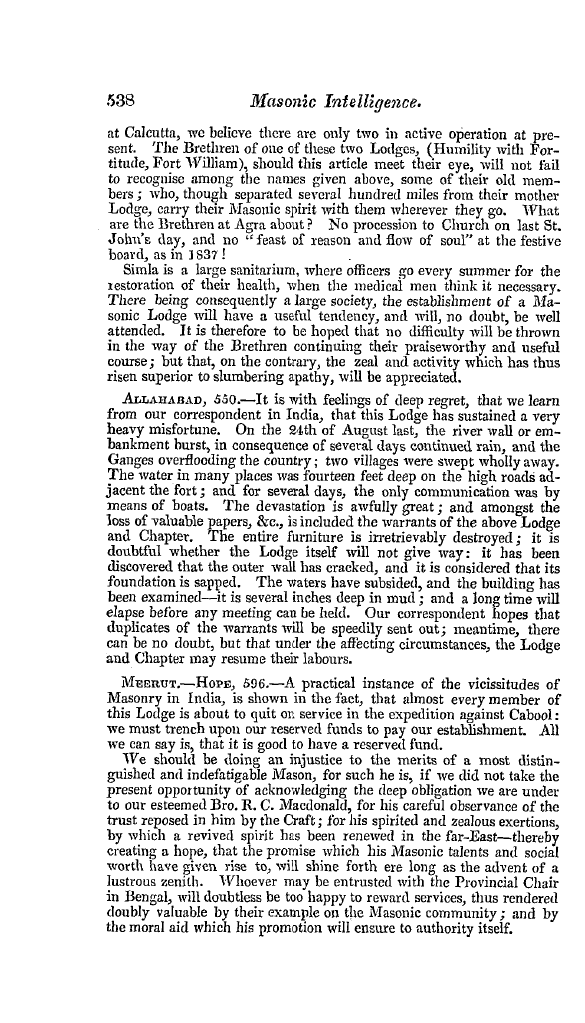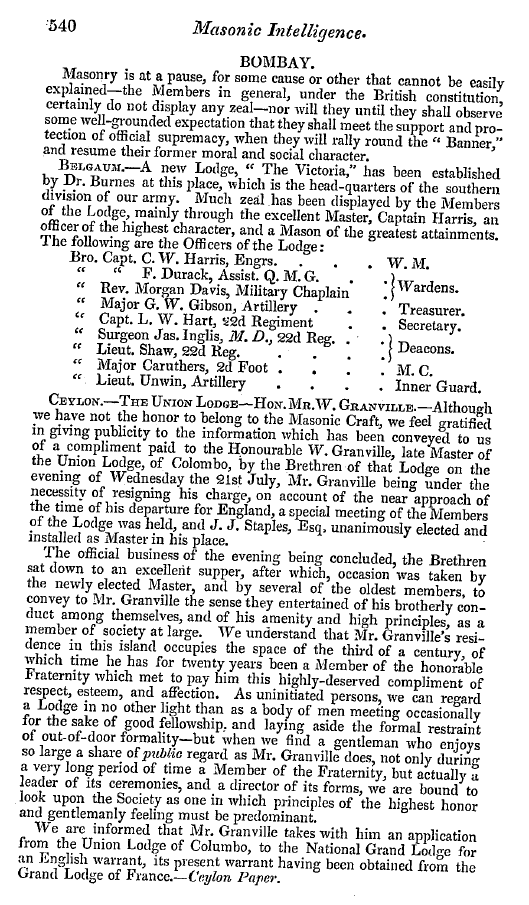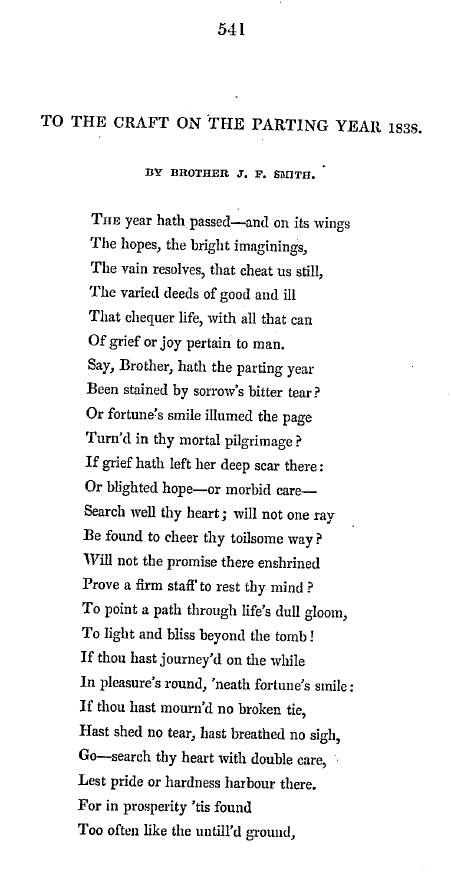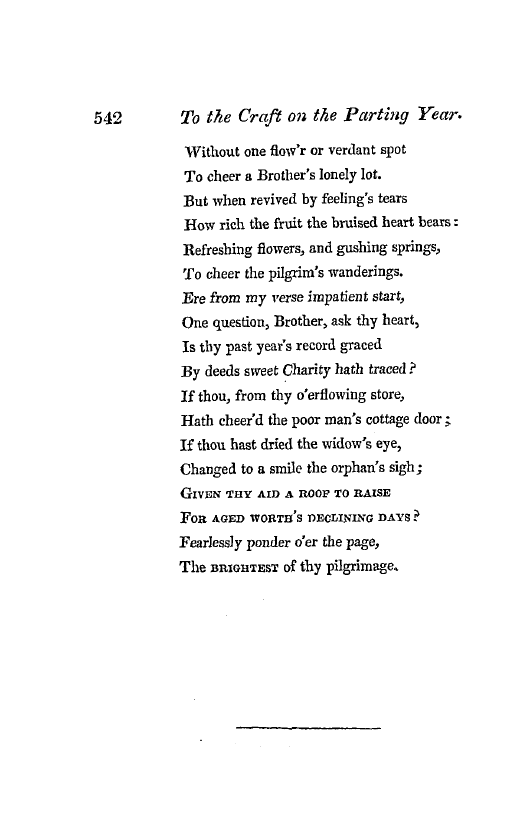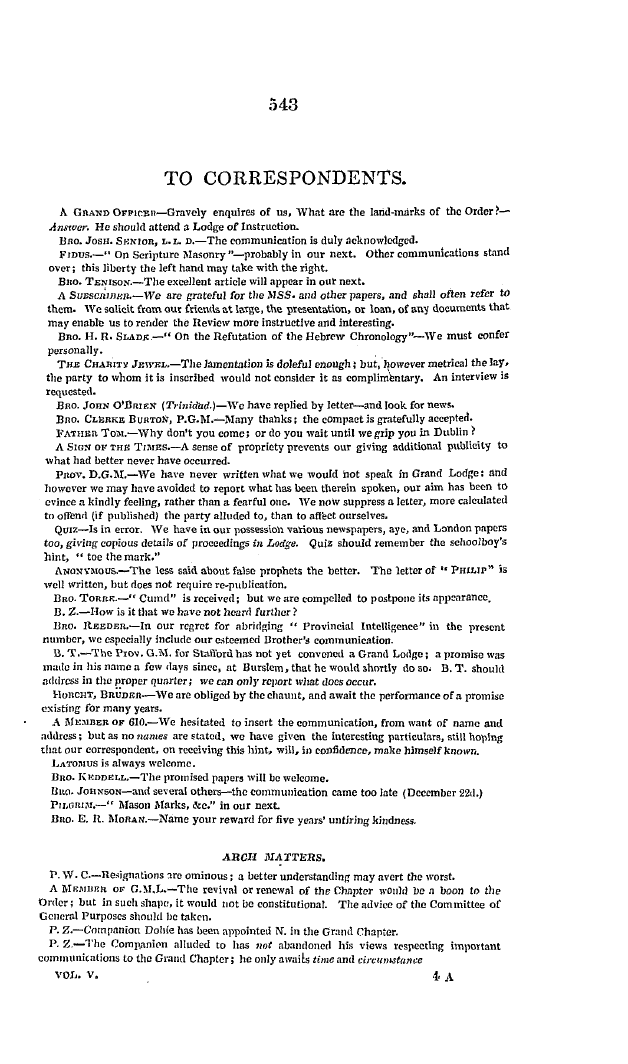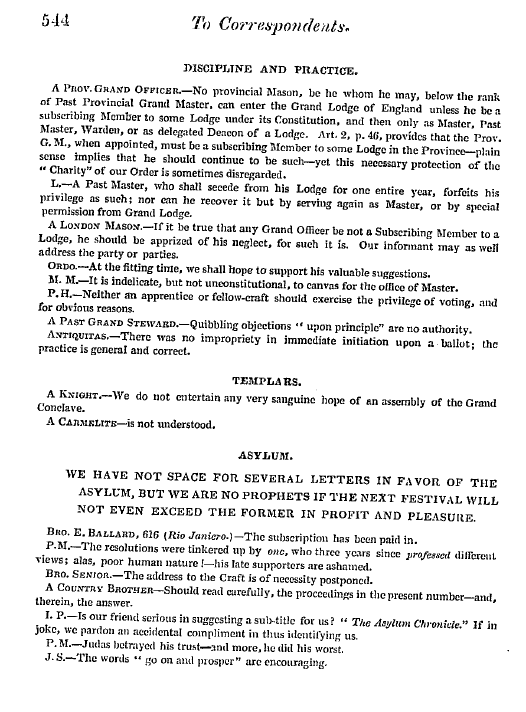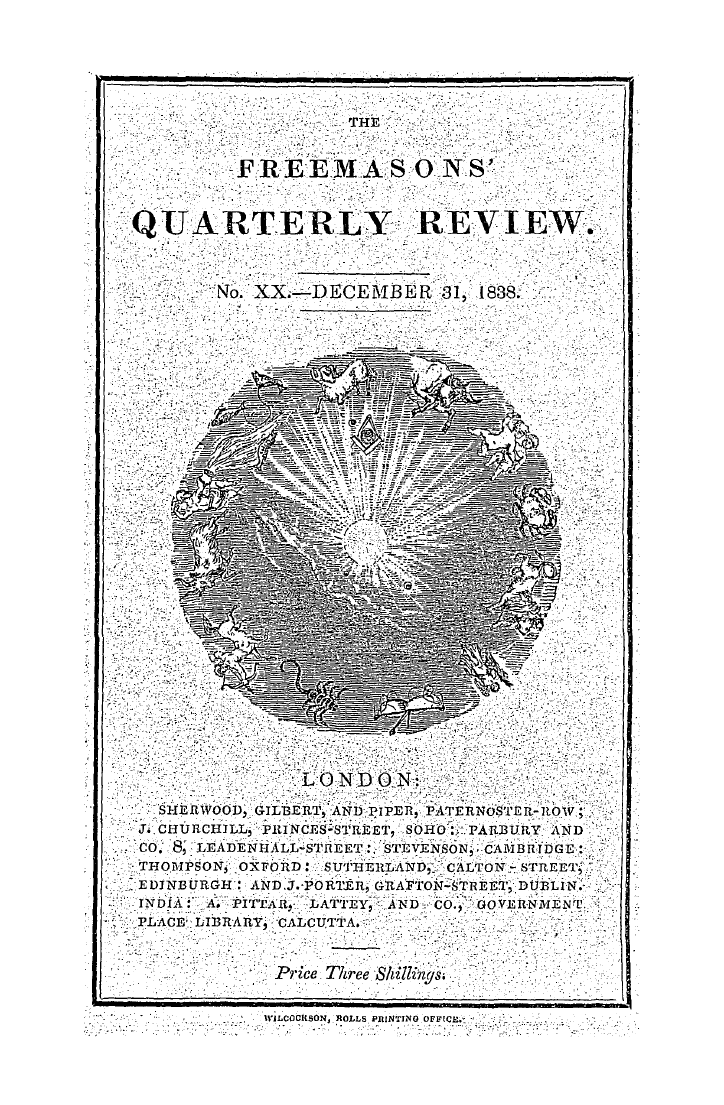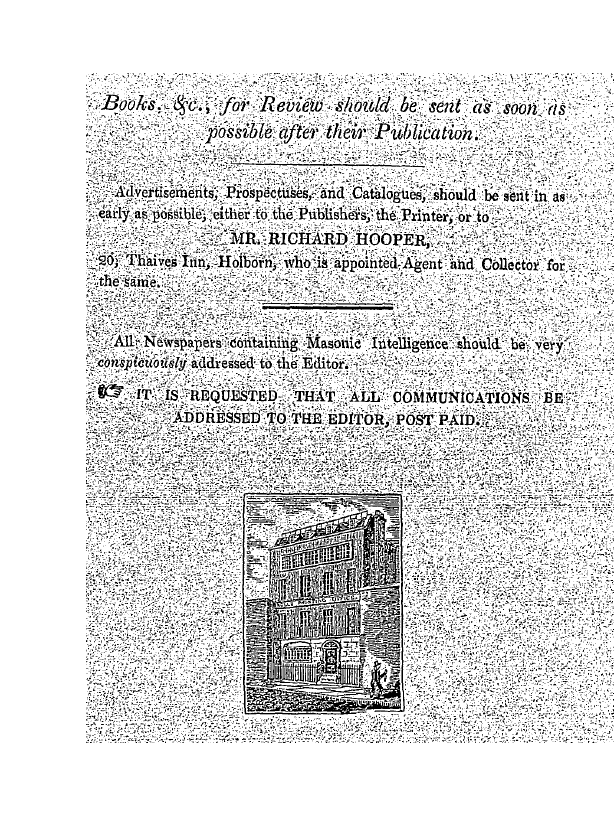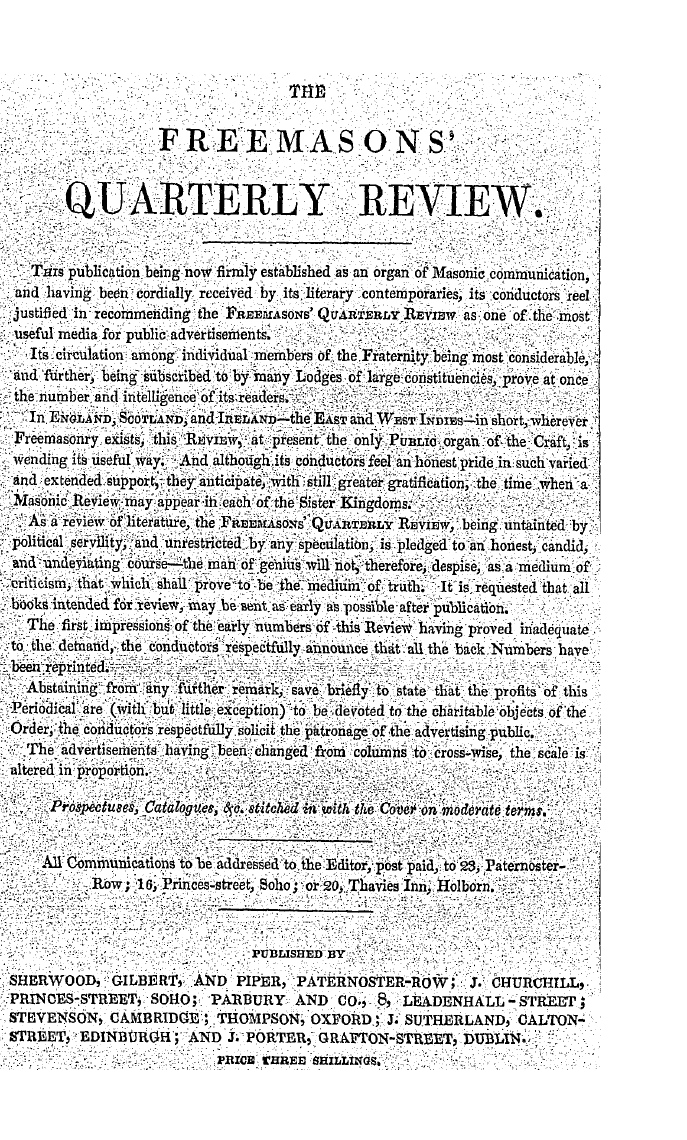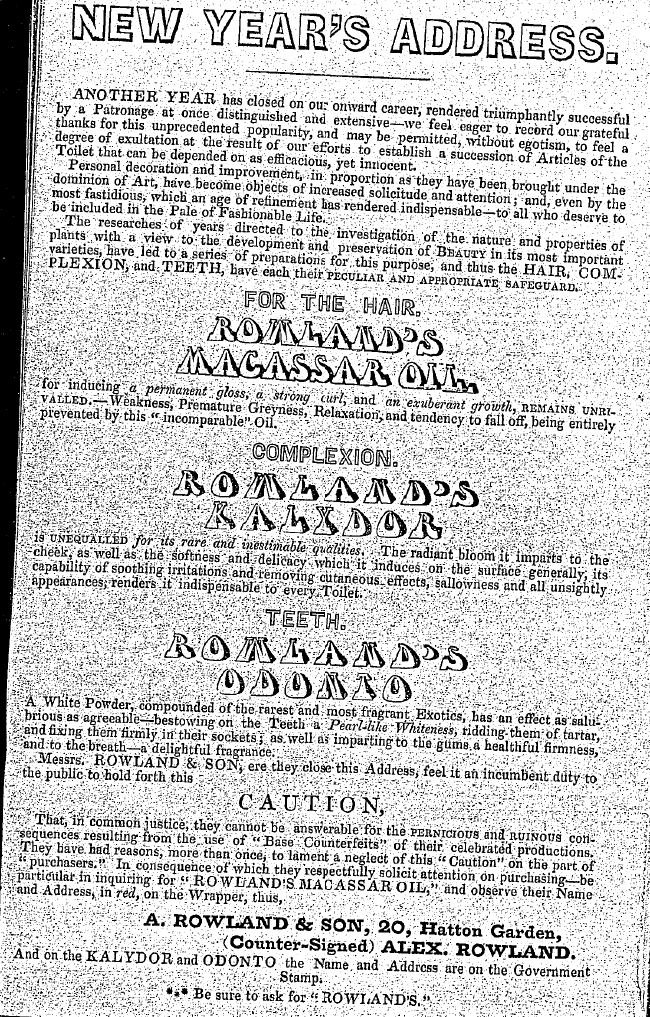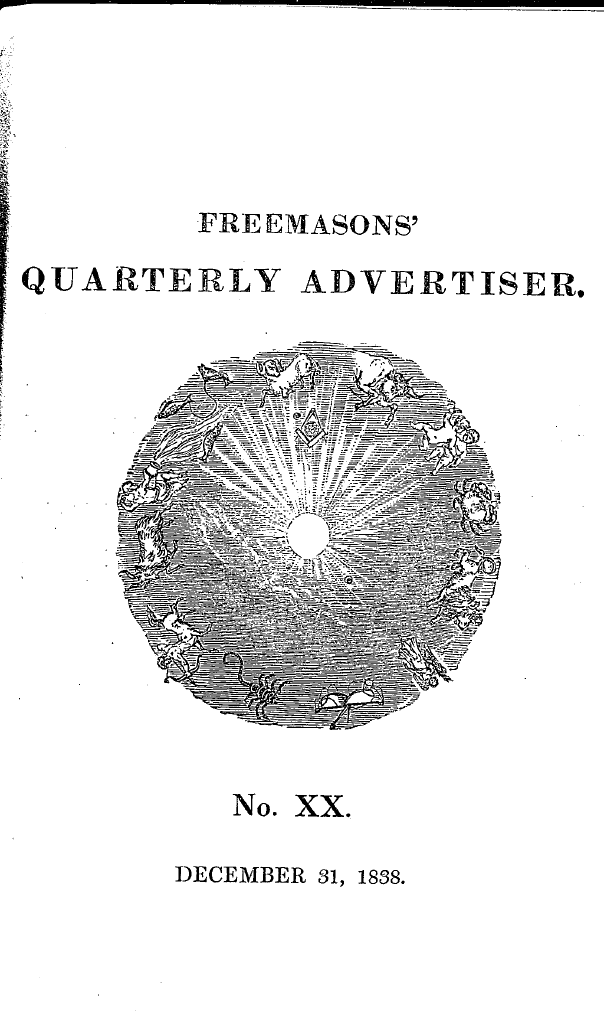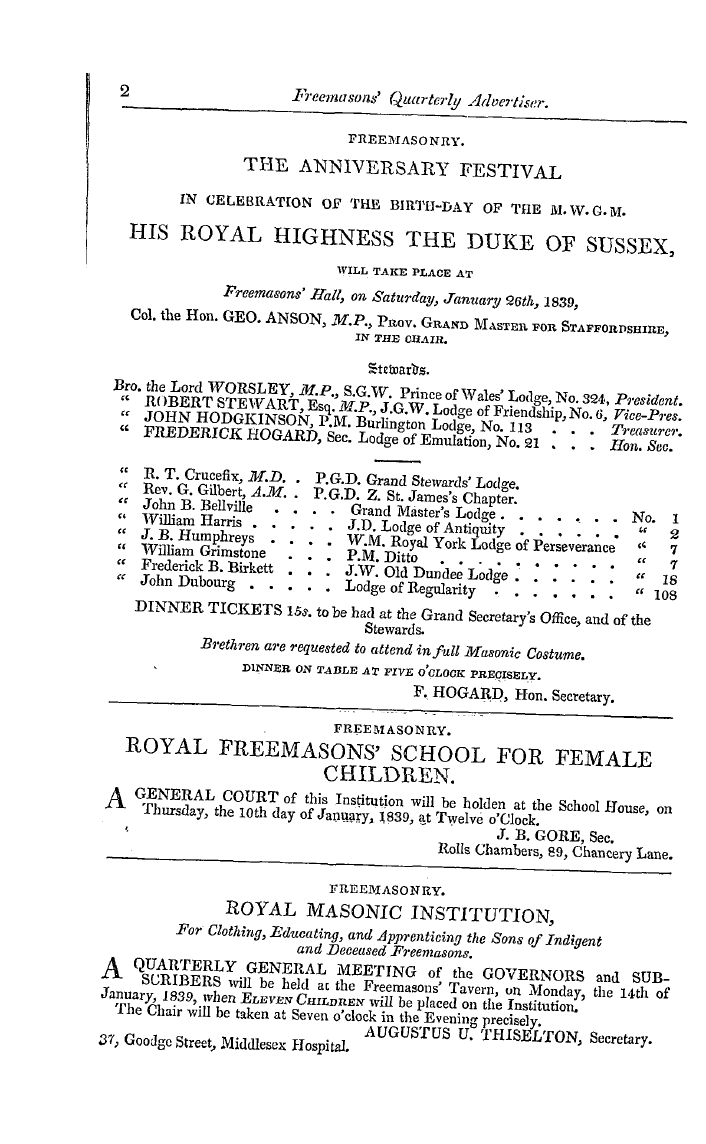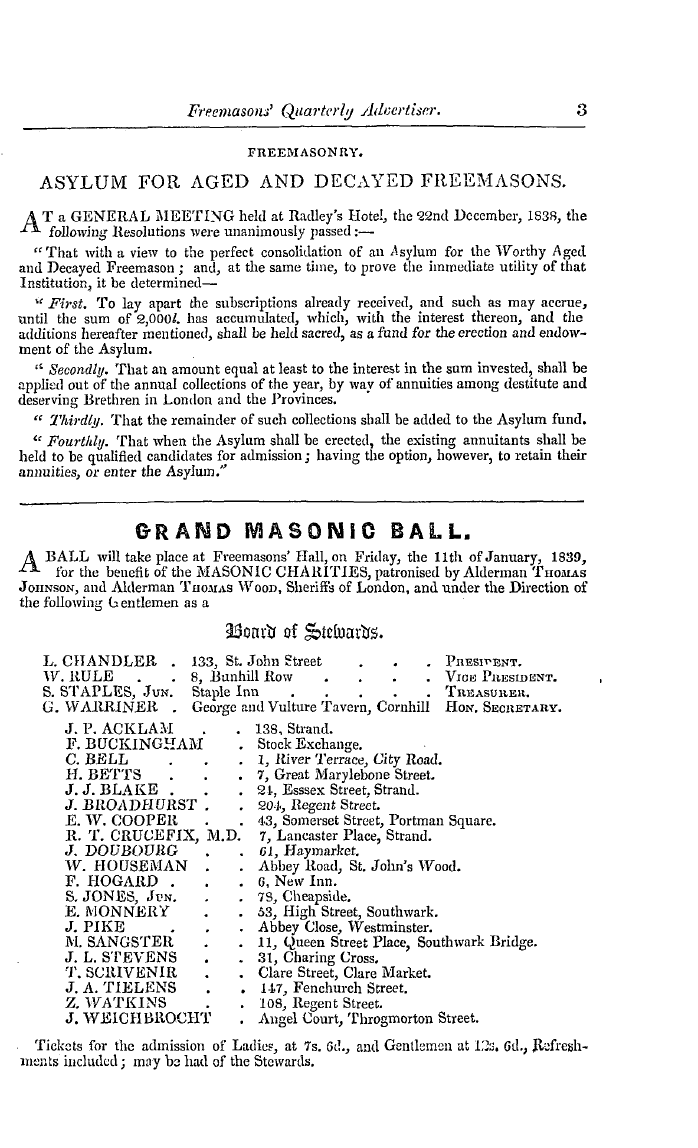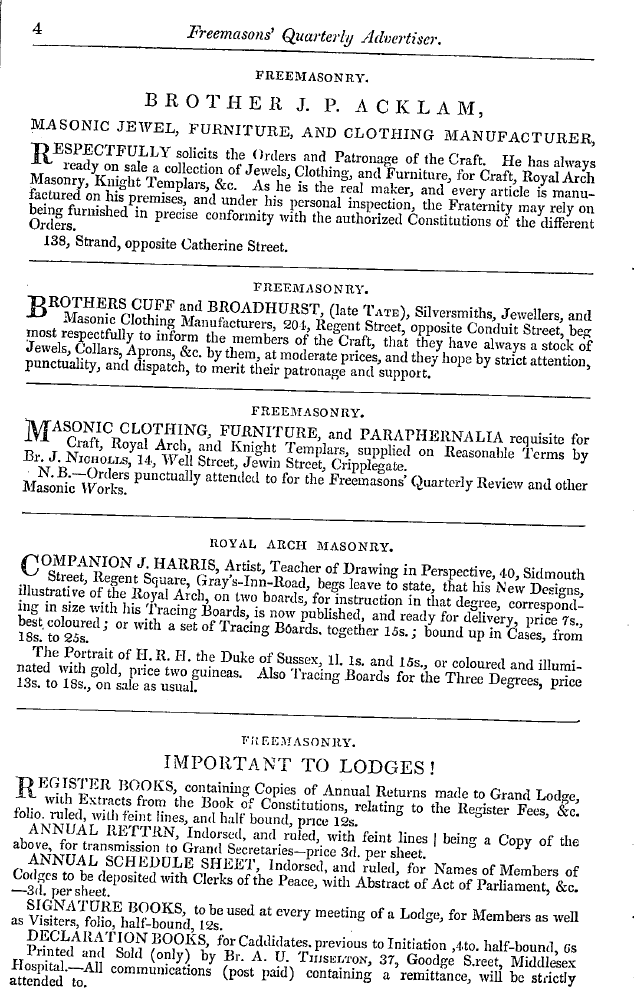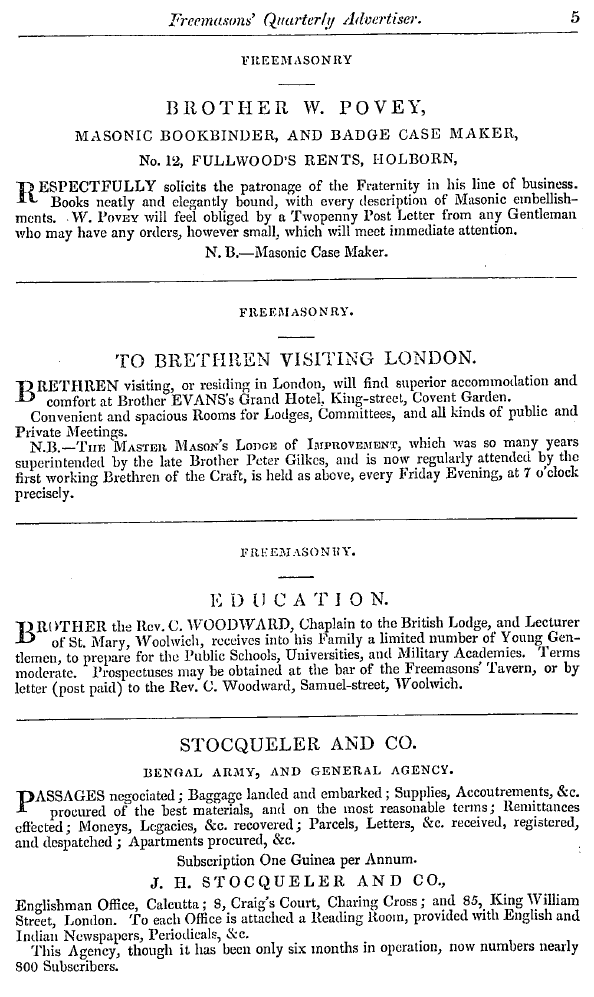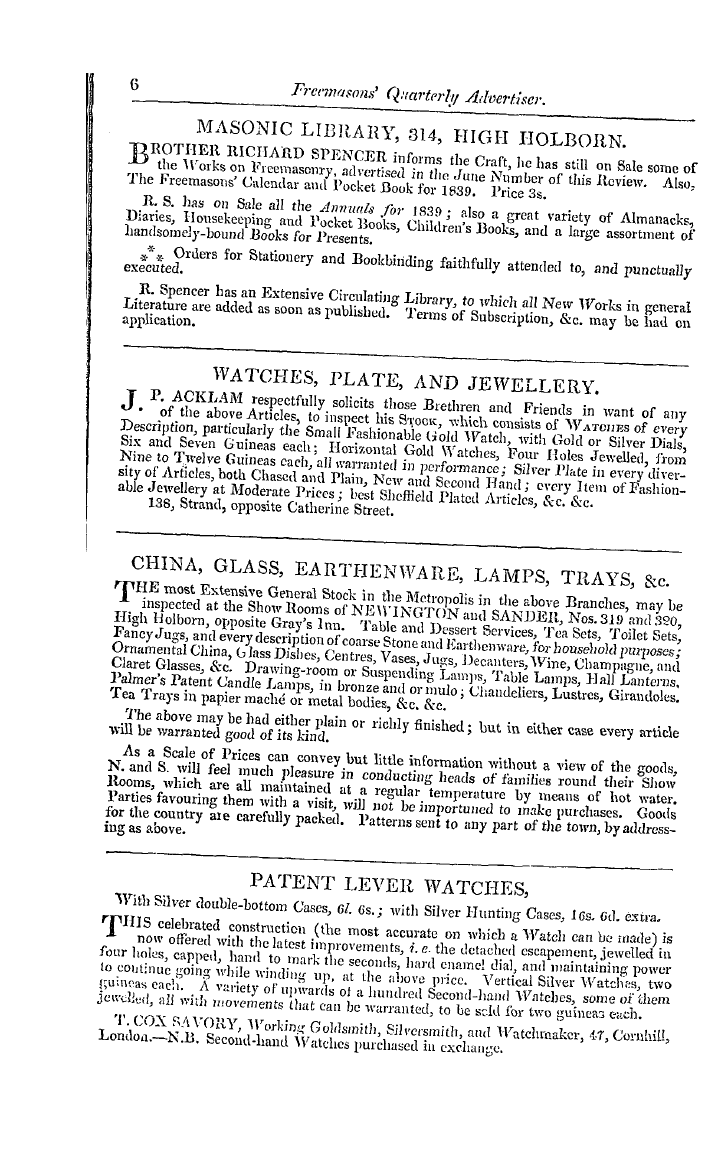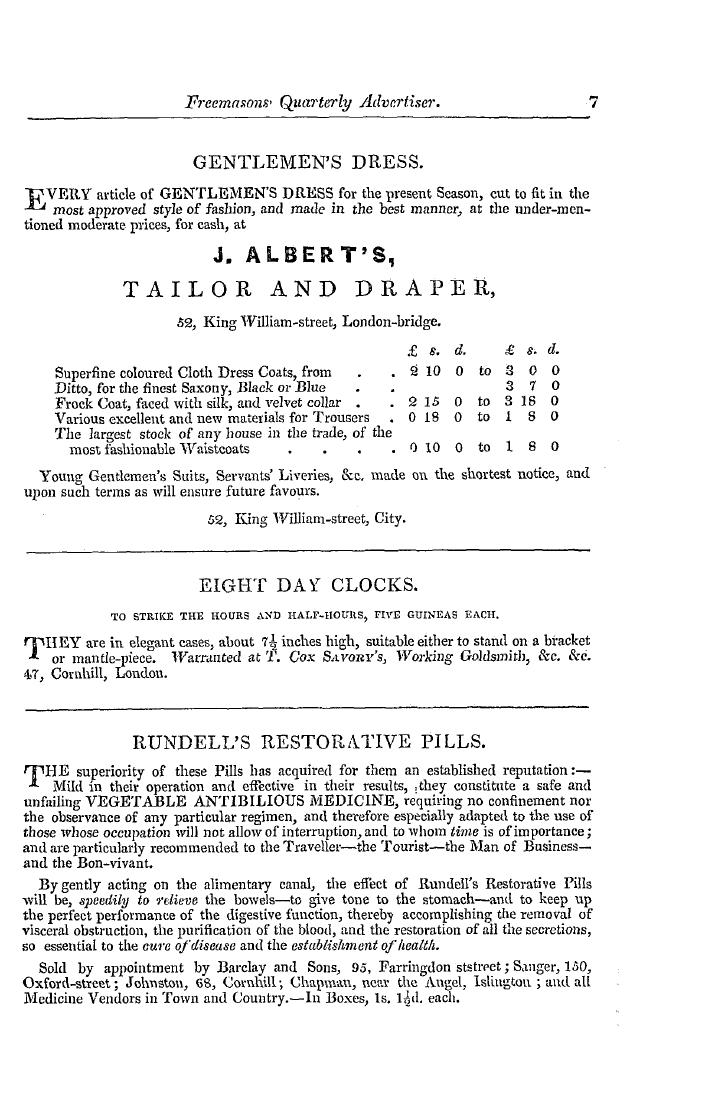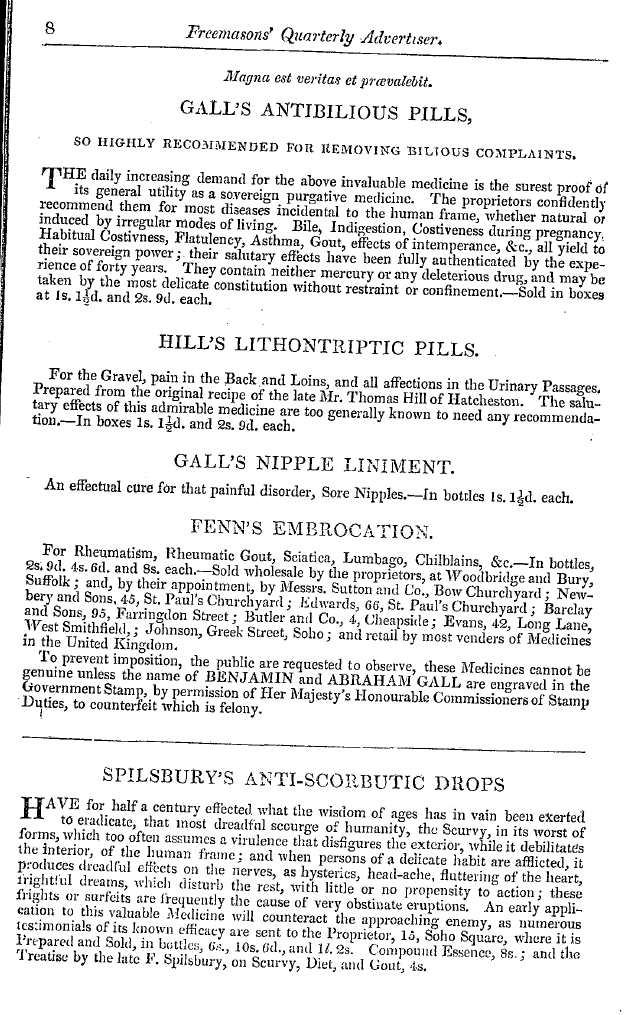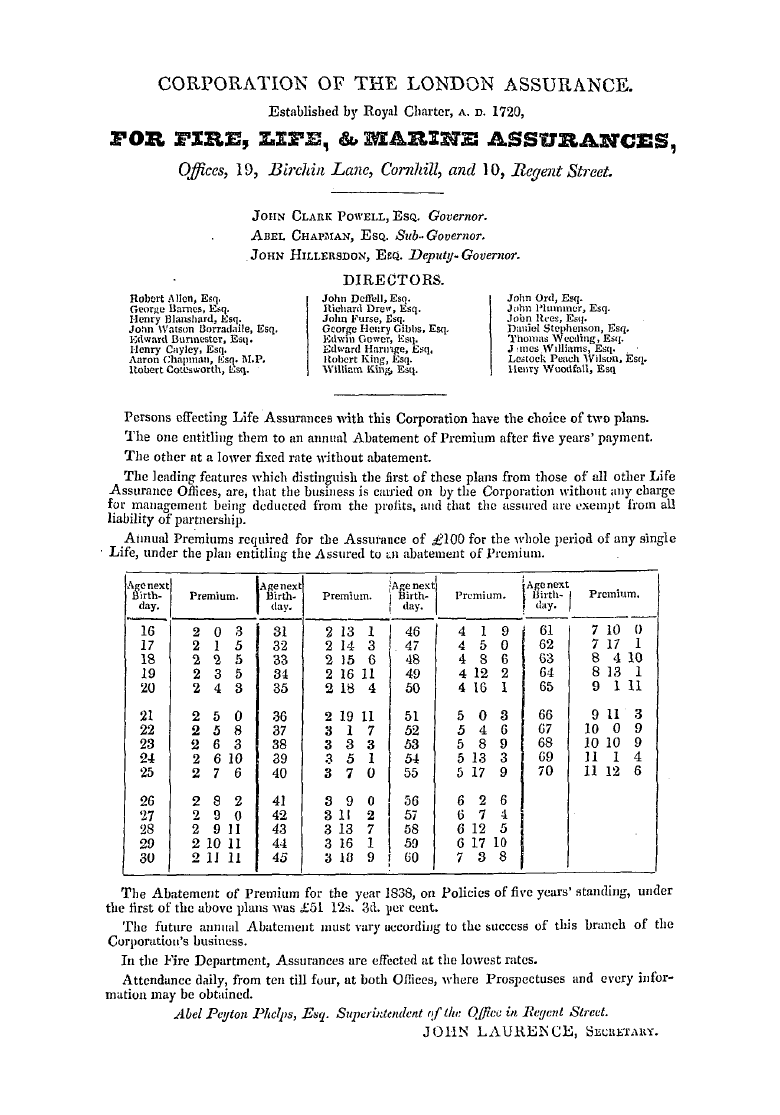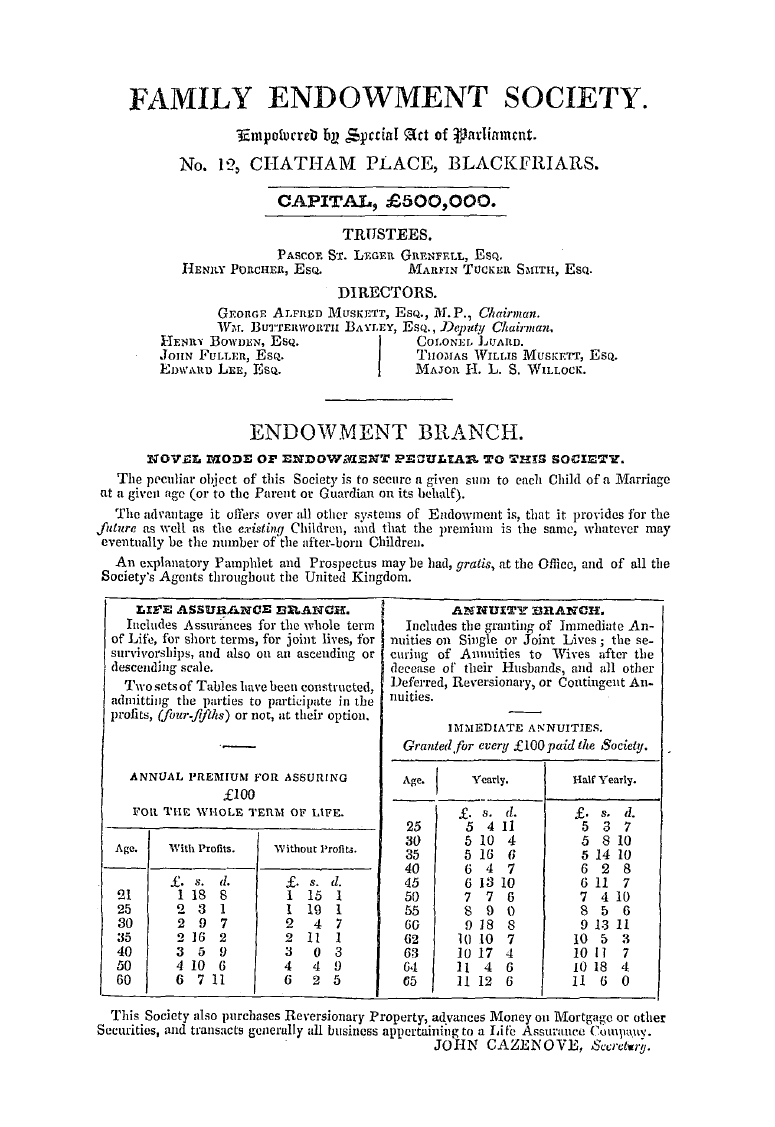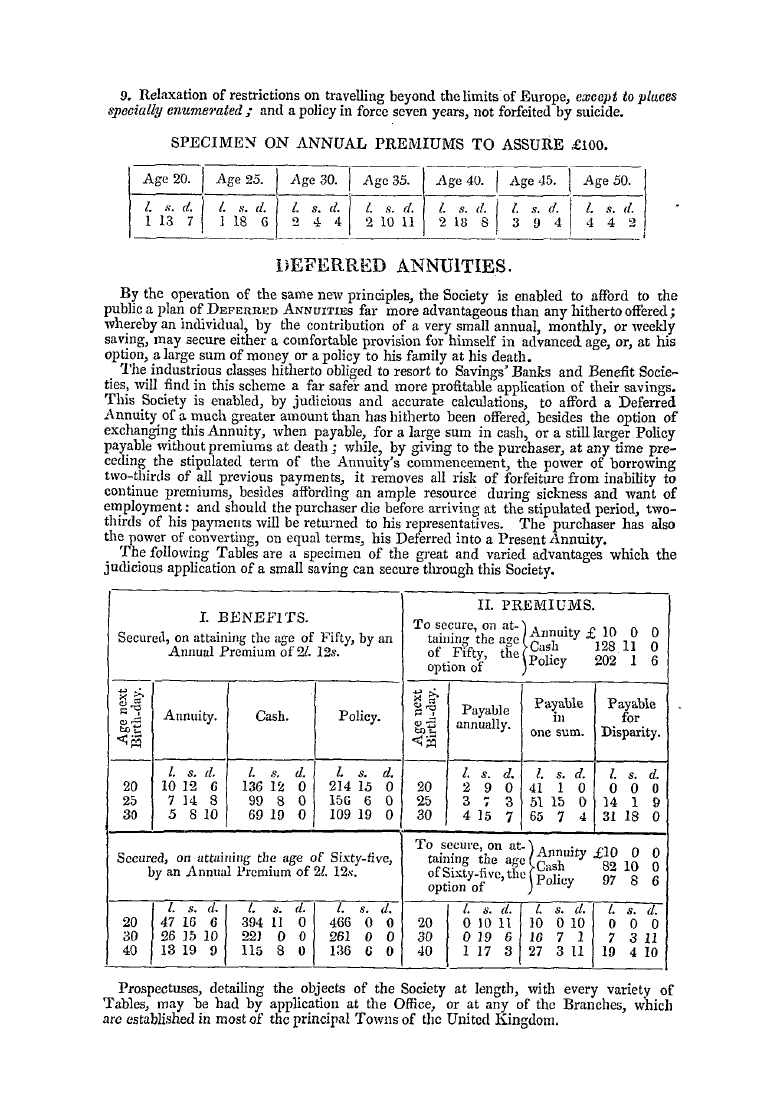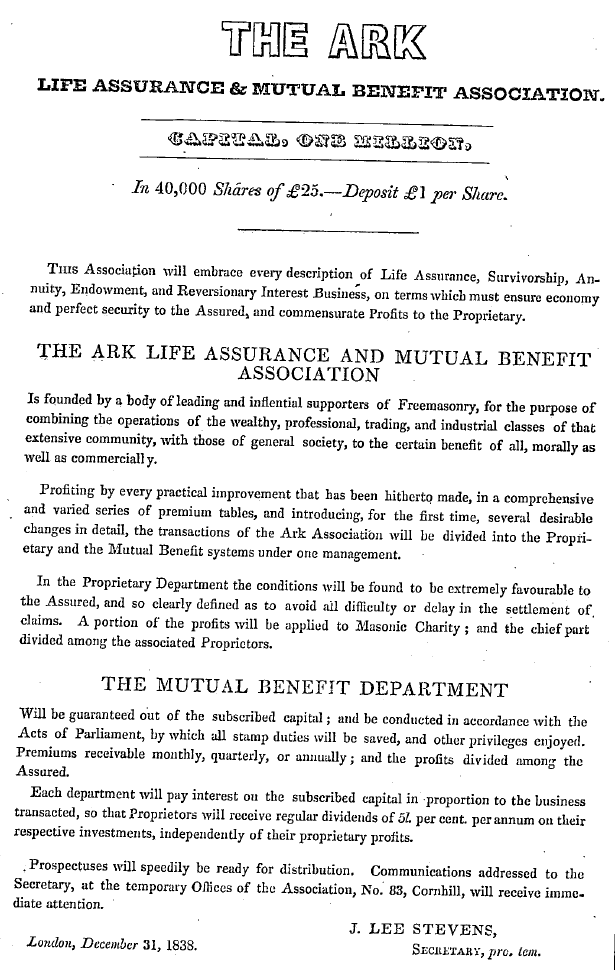-
Articles/Ads
Article NOTES ON MASONRY IN BENGAL. ← Page 3 of 7 →
Note: This text has been automatically extracted via Optical Character Recognition (OCR) software.
Notes On Masonry In Bengal.
the officers who marched on the last relief , and were members of it . If so , the new members join ; if not , they will probably meet together and , under a system hereafter to be mentioned , form a new Lodge . In either case , zealous efforts are made to proceed in the work , and it prospers apace . As all begins to work together for the good of Masonry ^ it is a chance that one or two of the leading Brethren , perhaps , one of the officers of the Lodge are called away by duty , sickness , or of to
necessity returning England . The same thing occurs frequently , and if in despite of this , matters still go on smoothly , and should no campaign require the removal of troops before—yet , at the expiration of three or four years , a relief again takes place , and the Masonic elements , though imperishable in themselves , are , as far as the Lodge is concerned , scattered over the various parts of India . Whether the Lodge will become extinct or no , depends on the chance of any given number of those
, who form the last relief , being Masons or otherwise . The uncertainty of the duration of other person ' s stay and removal , is not less than that of the military . To these observations , the Lodges in regiments are an exception , since , go where the regiments will , the Lodge and its members accompany it , and they are therefore exempt from the common calamity which affects Lodges located in stations . At the same time it is to be recollected , that in practice , regimental Lodges are confined wholl y to the Queen ' s troops , excepting only the Artillery Lodge . In regiments of Native Infantry , the number of the officers is too scanty to allow the possibility of a Lodge being permanently constituted in them .
Isow , all these obstacles , the existence of which no one acquainted with India and Indian Masonry can doubt , are sufficiently formidable as to present to the zealous Brother difficulties of no ordinary nature , inasmuch as no new system , or mode of government , prescribed by the authorities to which the Lodges are subservient , can remove them . They are only beyond the reach of regulation . Nevertheless , we have seen , that in spite of all these difficulties , Masonry has flourished in India , anddoubtless
, , will do so . In fact , such success , under such circumstances , is perhaps the most substantial proof that could well be given of the excellence of our most revered and inestimable Order . These facts are not brought forward as an argument against the extension of Masonry in our Oriental possessions ; on the contrary , they but tend to prove the vigour with which the sprig has taken root and flourished in spite of the disadvantages of soil and climateand
, . to lead the Brethren to conjecture to what extent its roots and branches might shoot forth were the plant tendered and fostered b y the care of efficient superintendance . That this has not been the case is manifest from the fact which will , in all probability , astonish many of our readers—that for the last ten years there has been virtuall y no Provincial ^ Grand Master for the extensive province of Bengal . That the Craft in India , from the circumstances above narrated , require than
more ordinary management has been plainly proved . Yet , notwithstanding this , we see the largest portion of India , which likewise contains the greatest number of Lodges and Masons , left without that government which is found almost vitally essential to the well-being of Masonry in the counties of England . We have used the word ' ¦ ' virtually" because , strictly speaking , there has been a P . G . M ., and there is one up to the date of this writing ; but he has , for a long series of years , been resident in England , while the deputy P . G . M . who , to this
Note: This text has been automatically extracted via Optical Character Recognition (OCR) software.
Notes On Masonry In Bengal.
the officers who marched on the last relief , and were members of it . If so , the new members join ; if not , they will probably meet together and , under a system hereafter to be mentioned , form a new Lodge . In either case , zealous efforts are made to proceed in the work , and it prospers apace . As all begins to work together for the good of Masonry ^ it is a chance that one or two of the leading Brethren , perhaps , one of the officers of the Lodge are called away by duty , sickness , or of to
necessity returning England . The same thing occurs frequently , and if in despite of this , matters still go on smoothly , and should no campaign require the removal of troops before—yet , at the expiration of three or four years , a relief again takes place , and the Masonic elements , though imperishable in themselves , are , as far as the Lodge is concerned , scattered over the various parts of India . Whether the Lodge will become extinct or no , depends on the chance of any given number of those
, who form the last relief , being Masons or otherwise . The uncertainty of the duration of other person ' s stay and removal , is not less than that of the military . To these observations , the Lodges in regiments are an exception , since , go where the regiments will , the Lodge and its members accompany it , and they are therefore exempt from the common calamity which affects Lodges located in stations . At the same time it is to be recollected , that in practice , regimental Lodges are confined wholl y to the Queen ' s troops , excepting only the Artillery Lodge . In regiments of Native Infantry , the number of the officers is too scanty to allow the possibility of a Lodge being permanently constituted in them .
Isow , all these obstacles , the existence of which no one acquainted with India and Indian Masonry can doubt , are sufficiently formidable as to present to the zealous Brother difficulties of no ordinary nature , inasmuch as no new system , or mode of government , prescribed by the authorities to which the Lodges are subservient , can remove them . They are only beyond the reach of regulation . Nevertheless , we have seen , that in spite of all these difficulties , Masonry has flourished in India , anddoubtless
, , will do so . In fact , such success , under such circumstances , is perhaps the most substantial proof that could well be given of the excellence of our most revered and inestimable Order . These facts are not brought forward as an argument against the extension of Masonry in our Oriental possessions ; on the contrary , they but tend to prove the vigour with which the sprig has taken root and flourished in spite of the disadvantages of soil and climateand
, . to lead the Brethren to conjecture to what extent its roots and branches might shoot forth were the plant tendered and fostered b y the care of efficient superintendance . That this has not been the case is manifest from the fact which will , in all probability , astonish many of our readers—that for the last ten years there has been virtuall y no Provincial ^ Grand Master for the extensive province of Bengal . That the Craft in India , from the circumstances above narrated , require than
more ordinary management has been plainly proved . Yet , notwithstanding this , we see the largest portion of India , which likewise contains the greatest number of Lodges and Masons , left without that government which is found almost vitally essential to the well-being of Masonry in the counties of England . We have used the word ' ¦ ' virtually" because , strictly speaking , there has been a P . G . M ., and there is one up to the date of this writing ; but he has , for a long series of years , been resident in England , while the deputy P . G . M . who , to this




























































